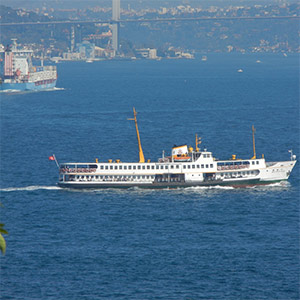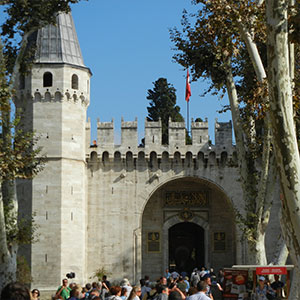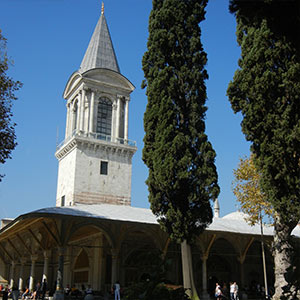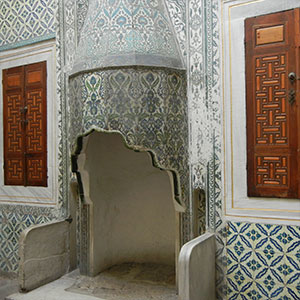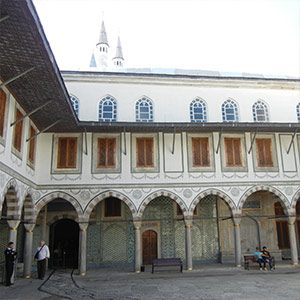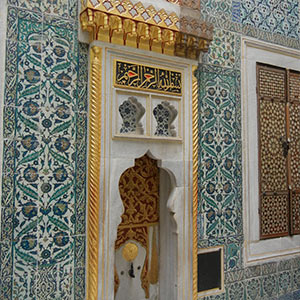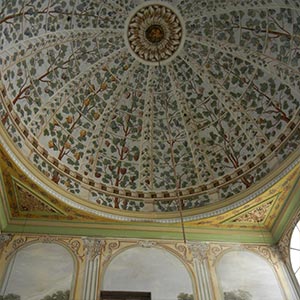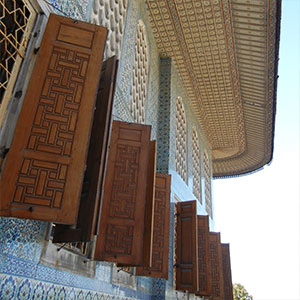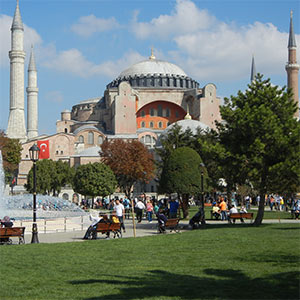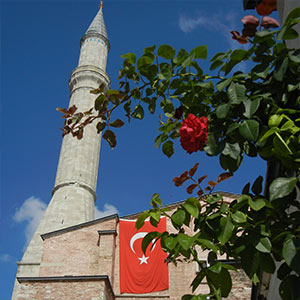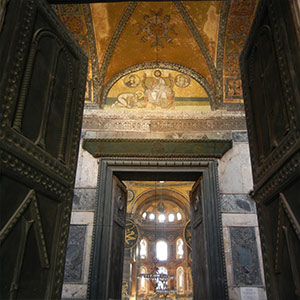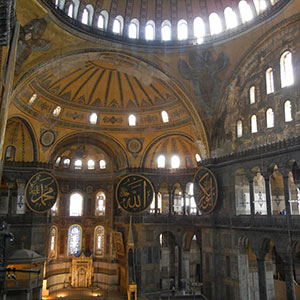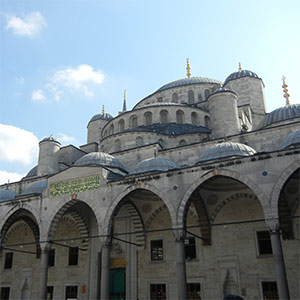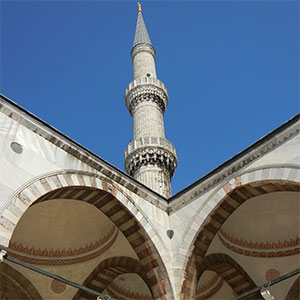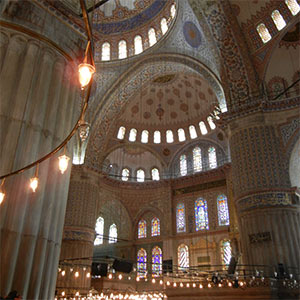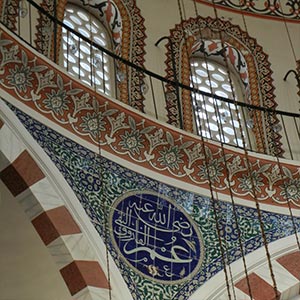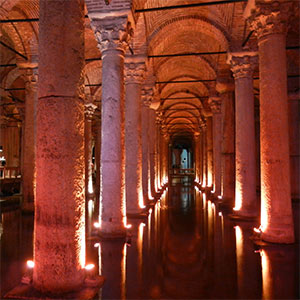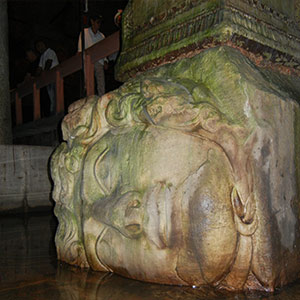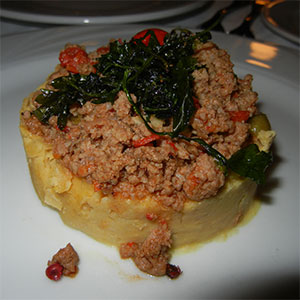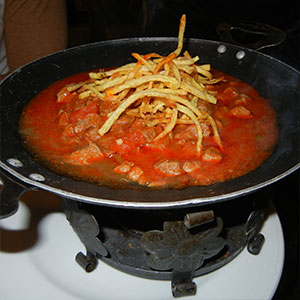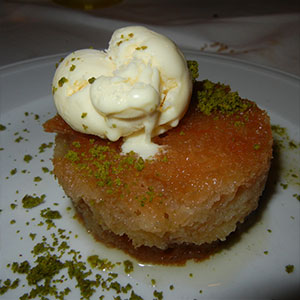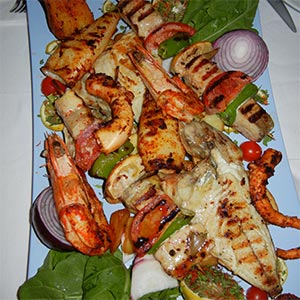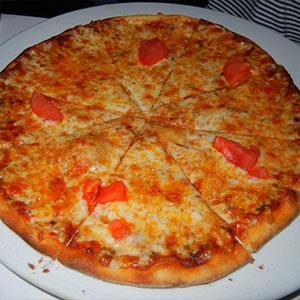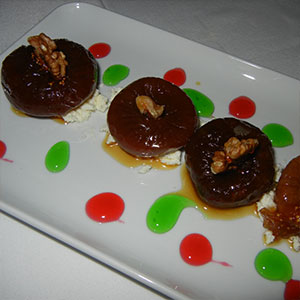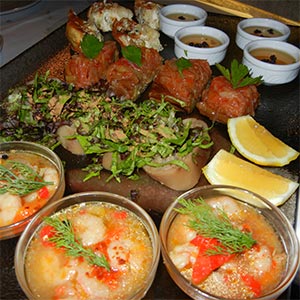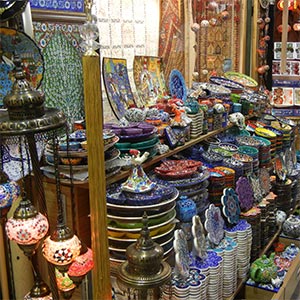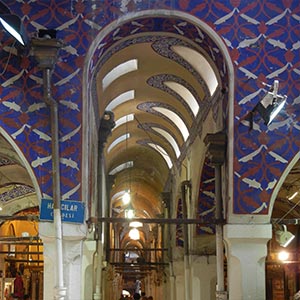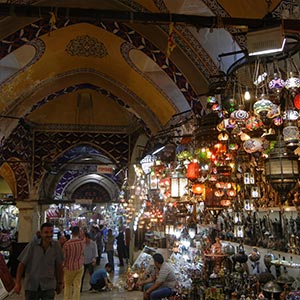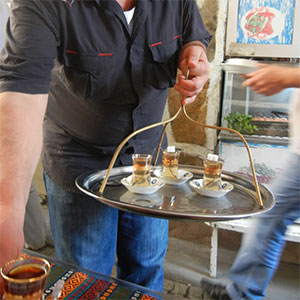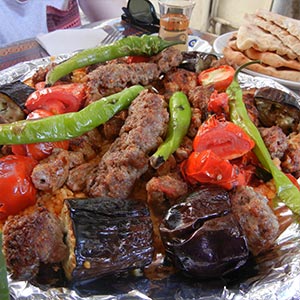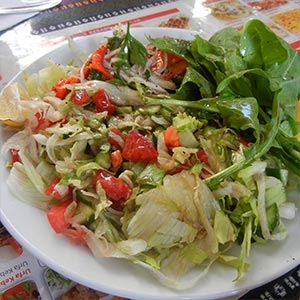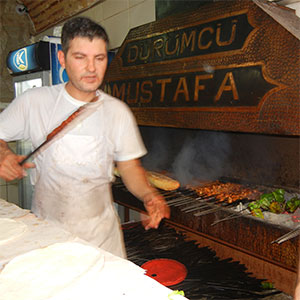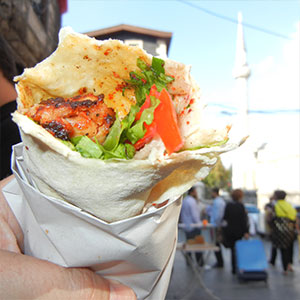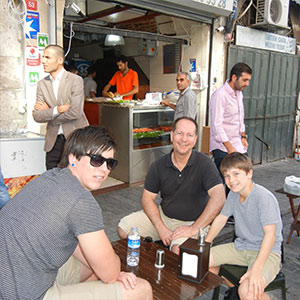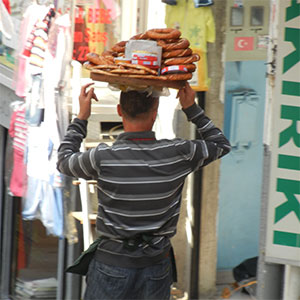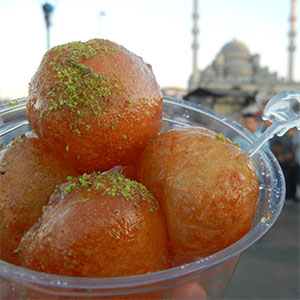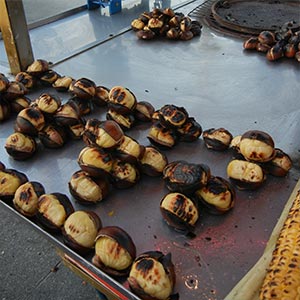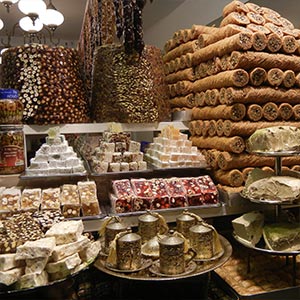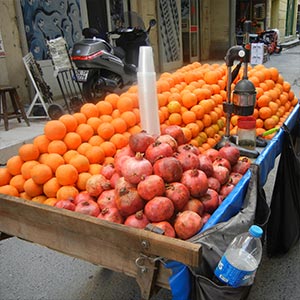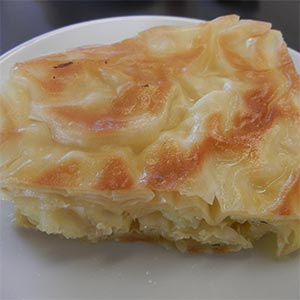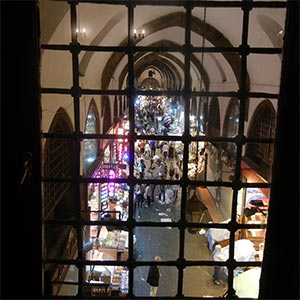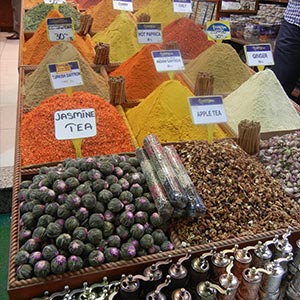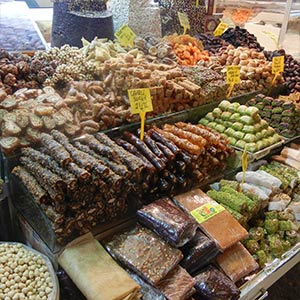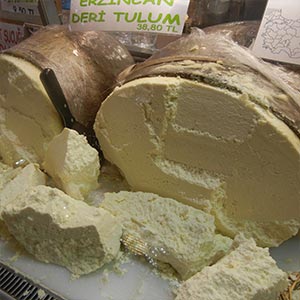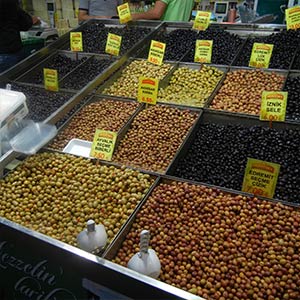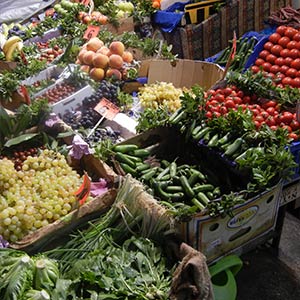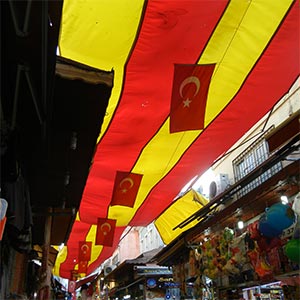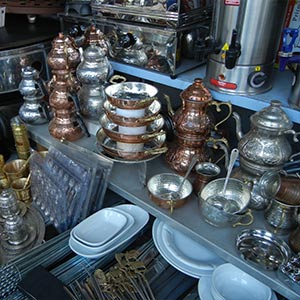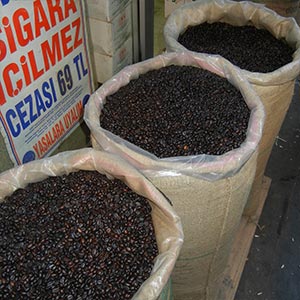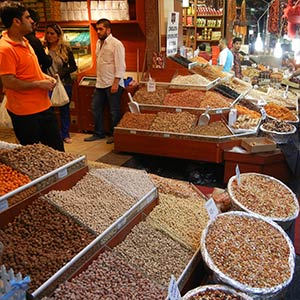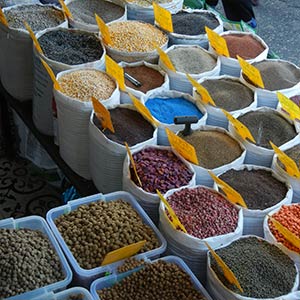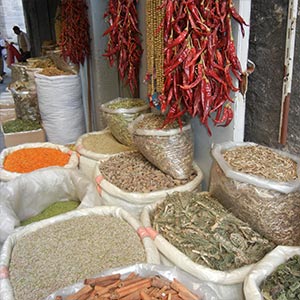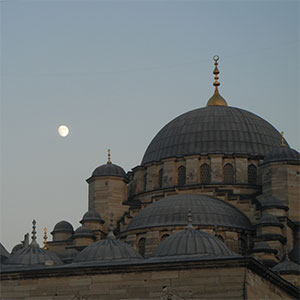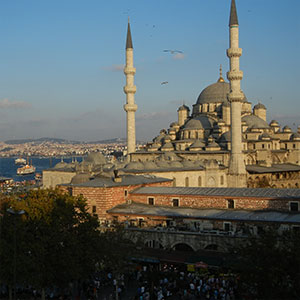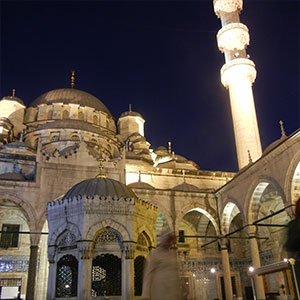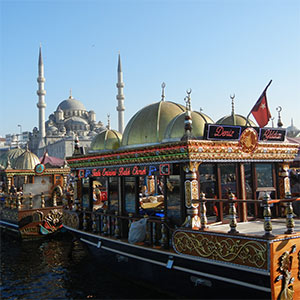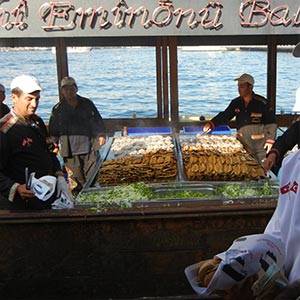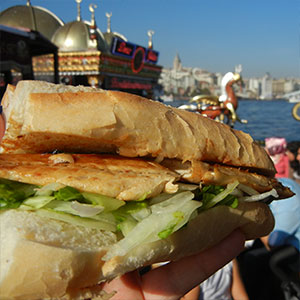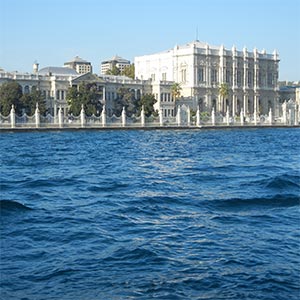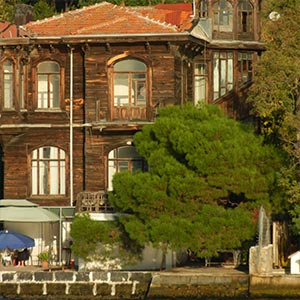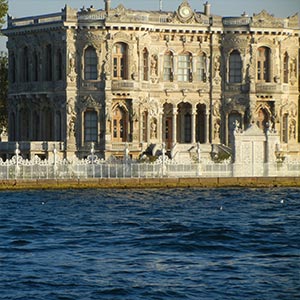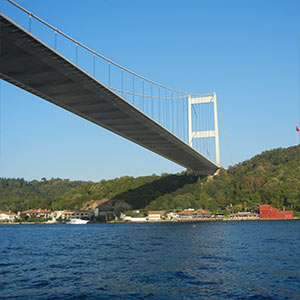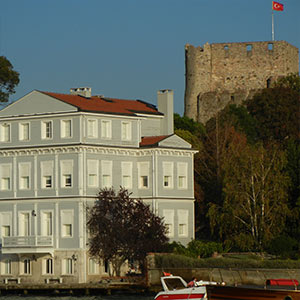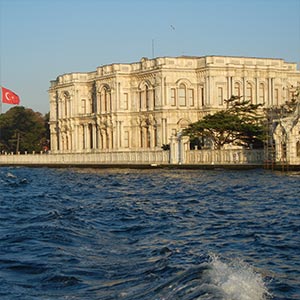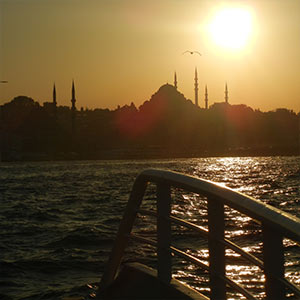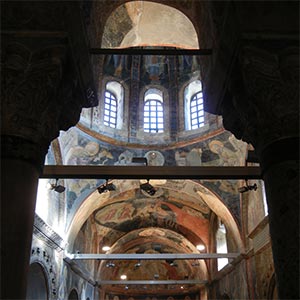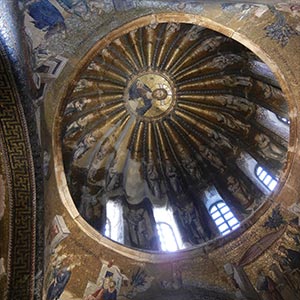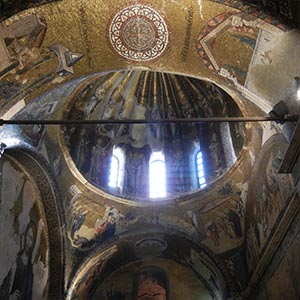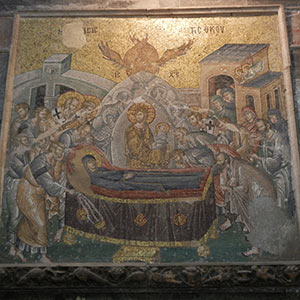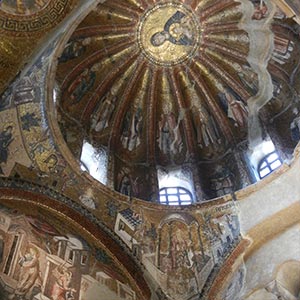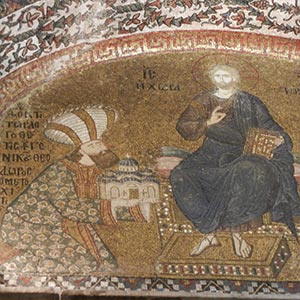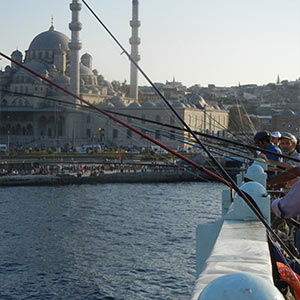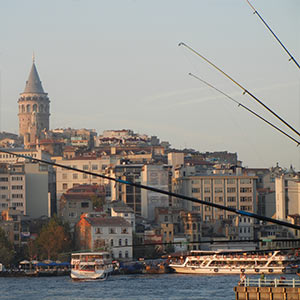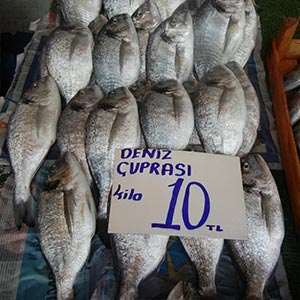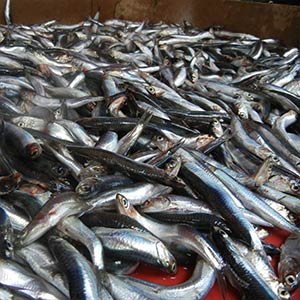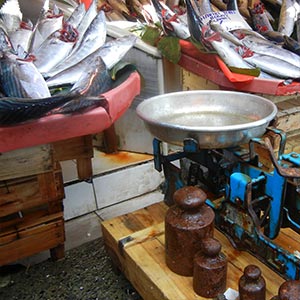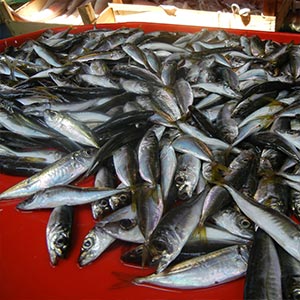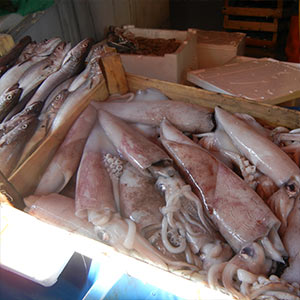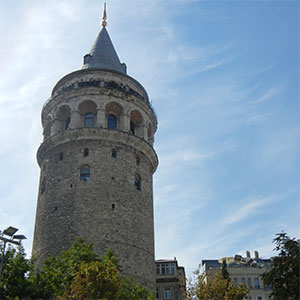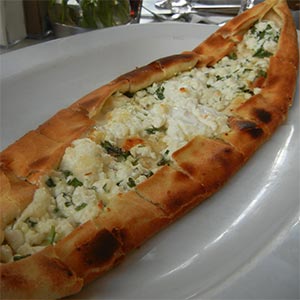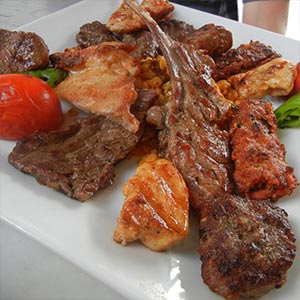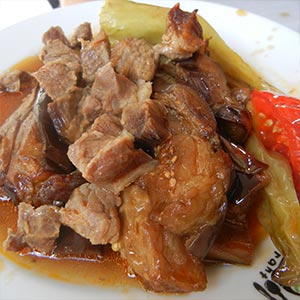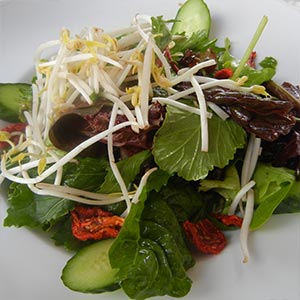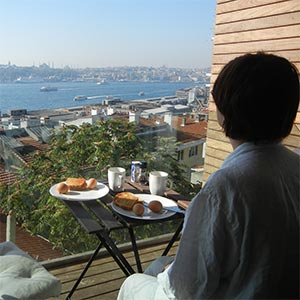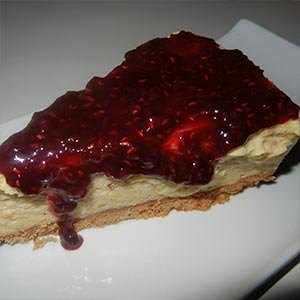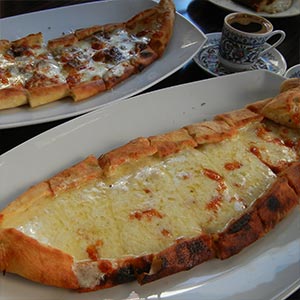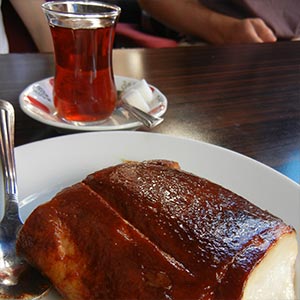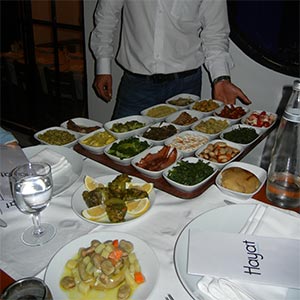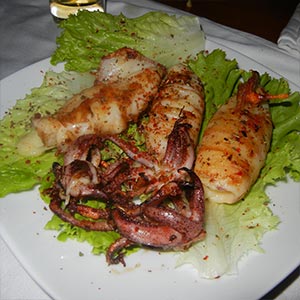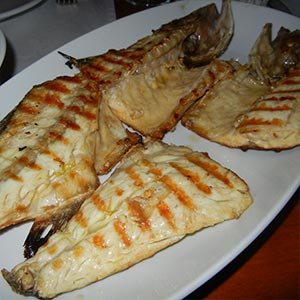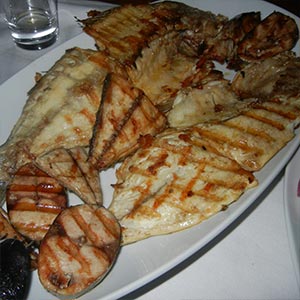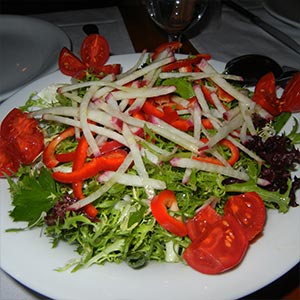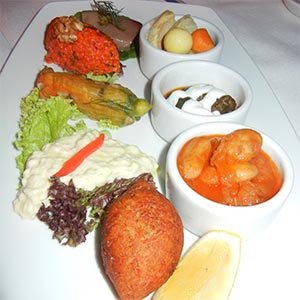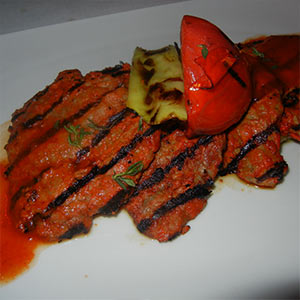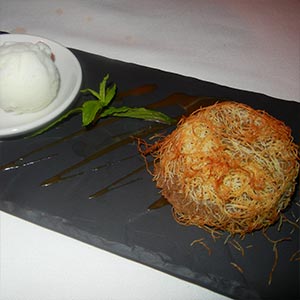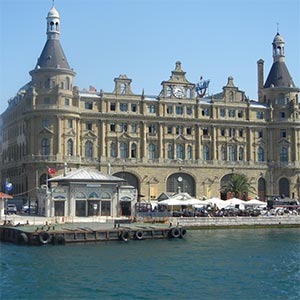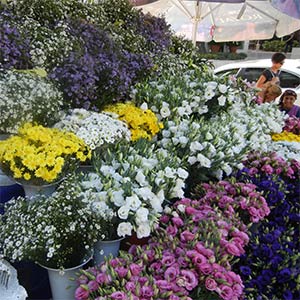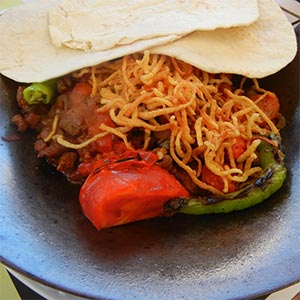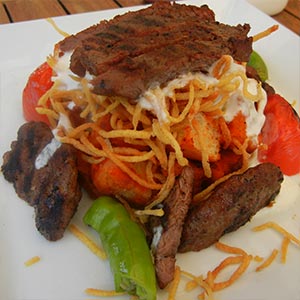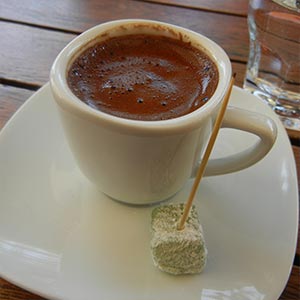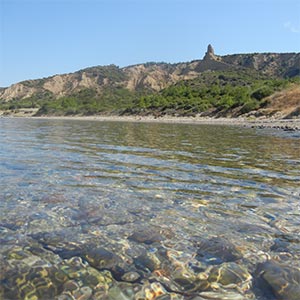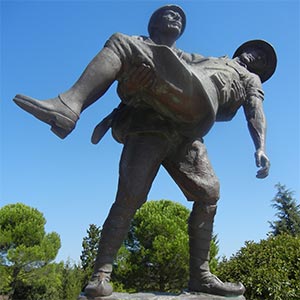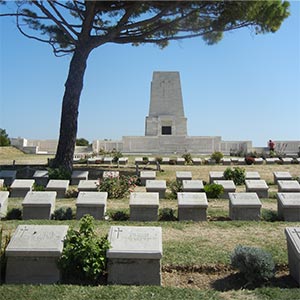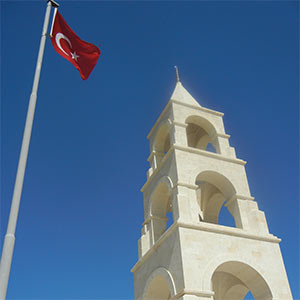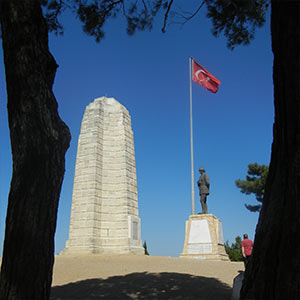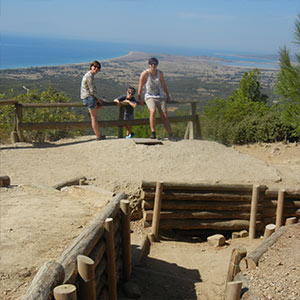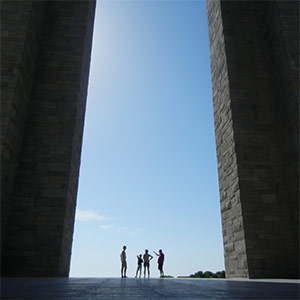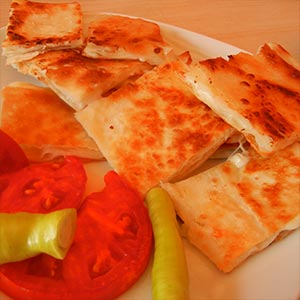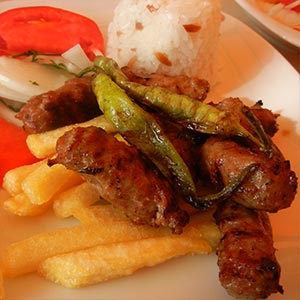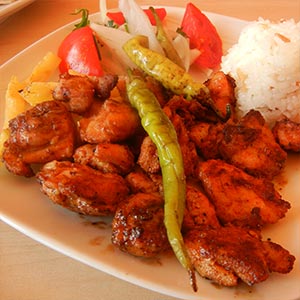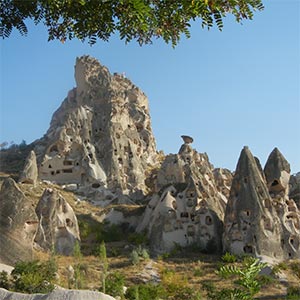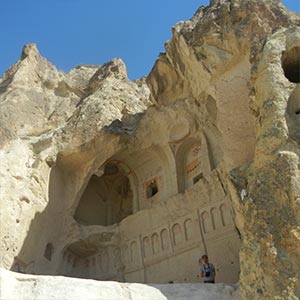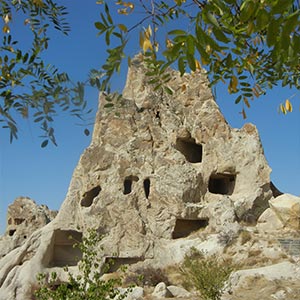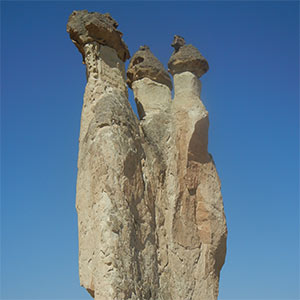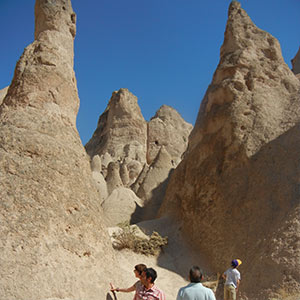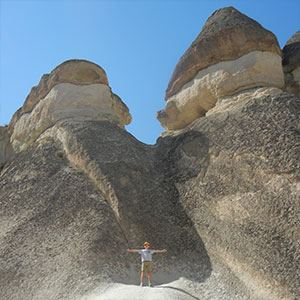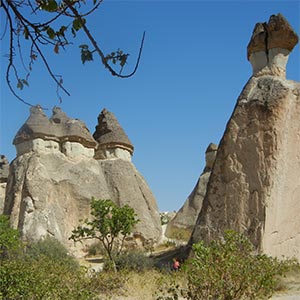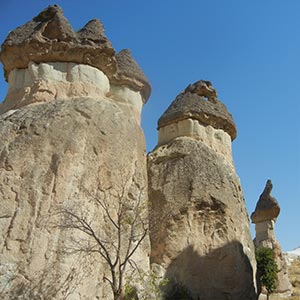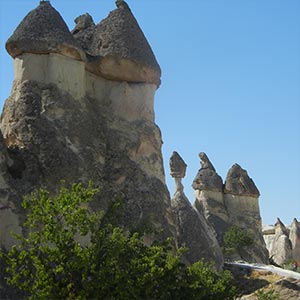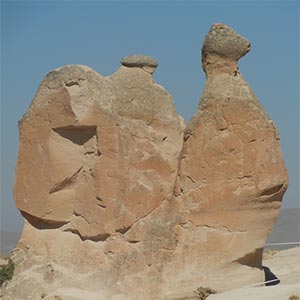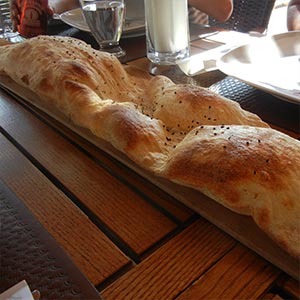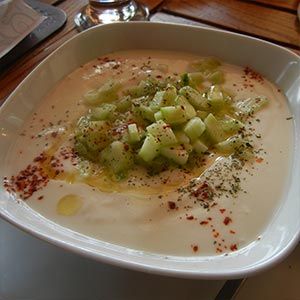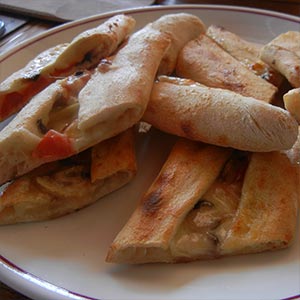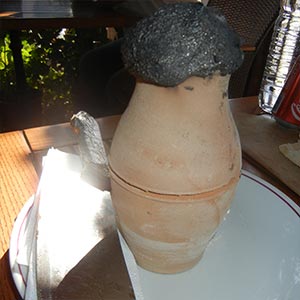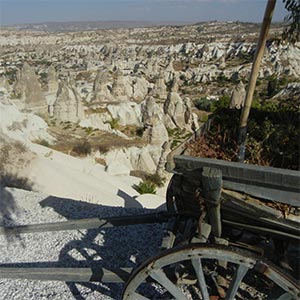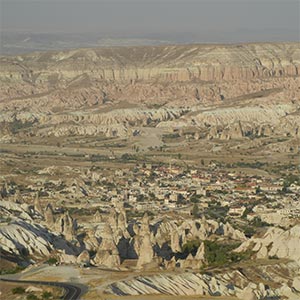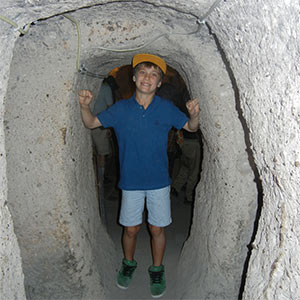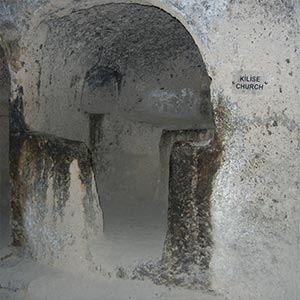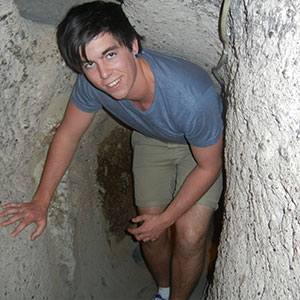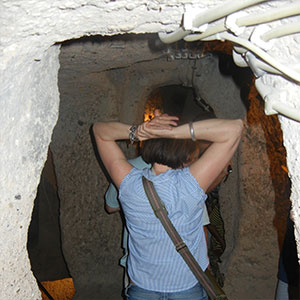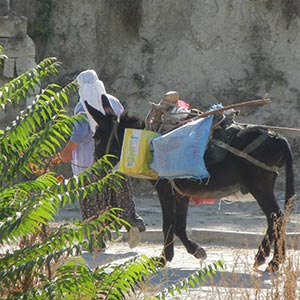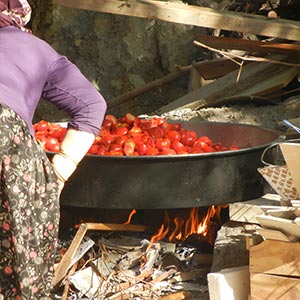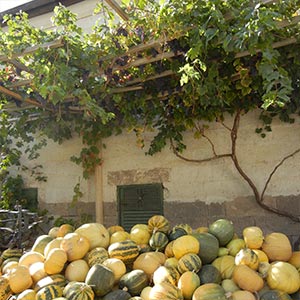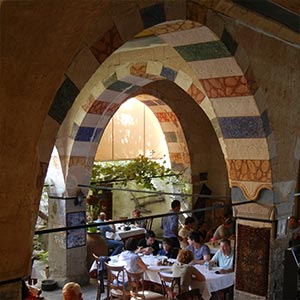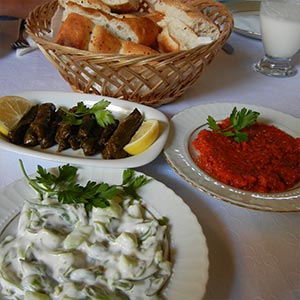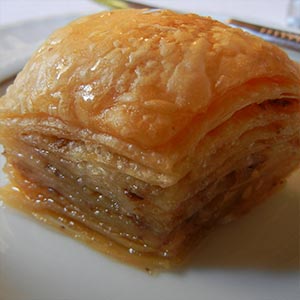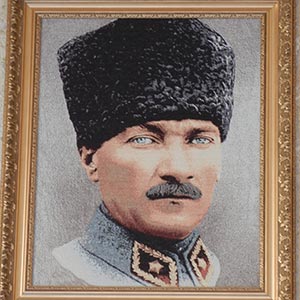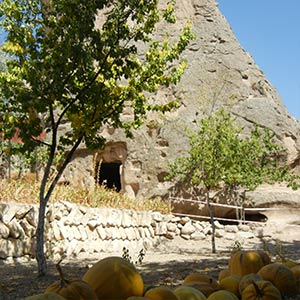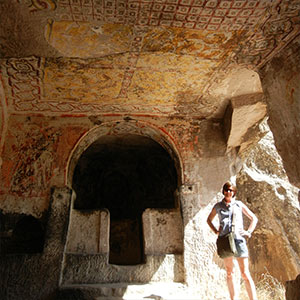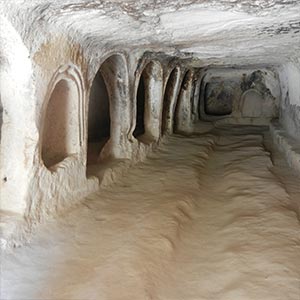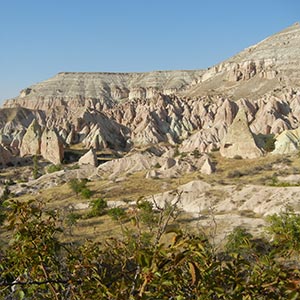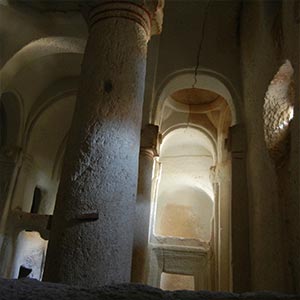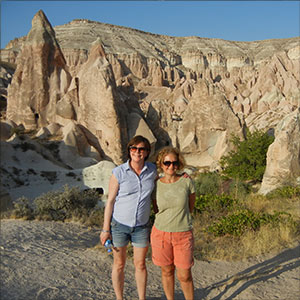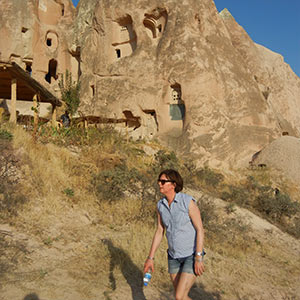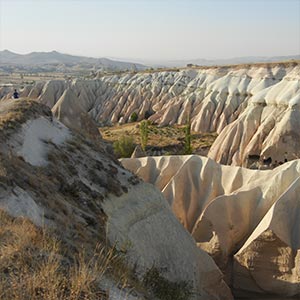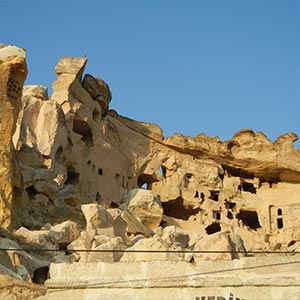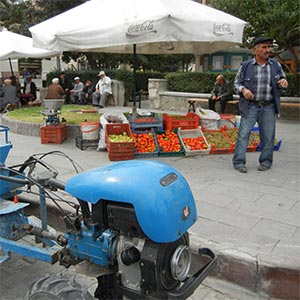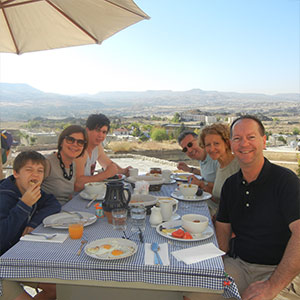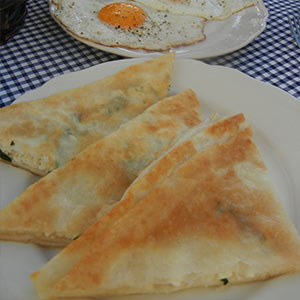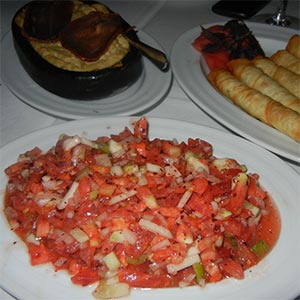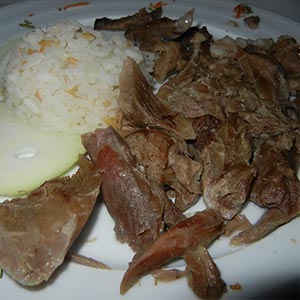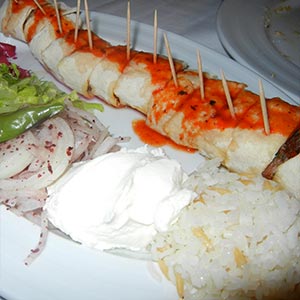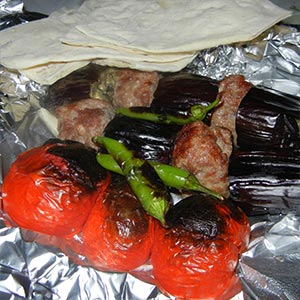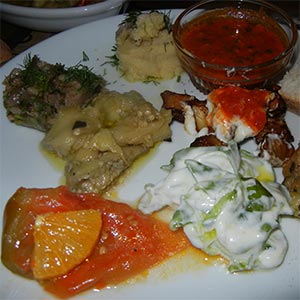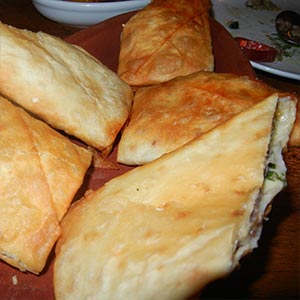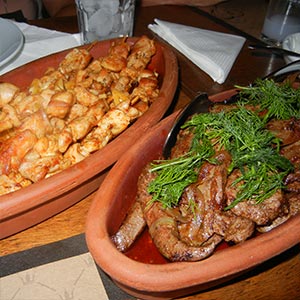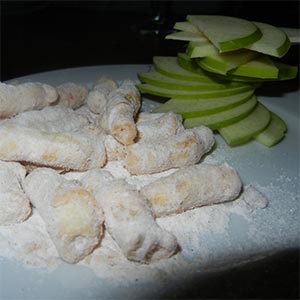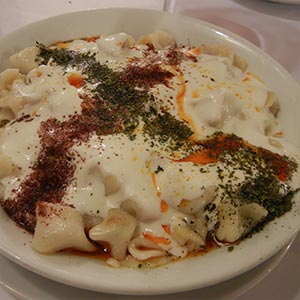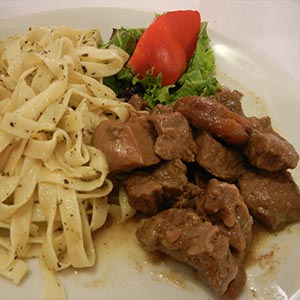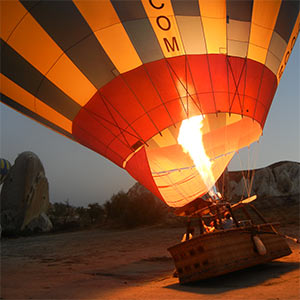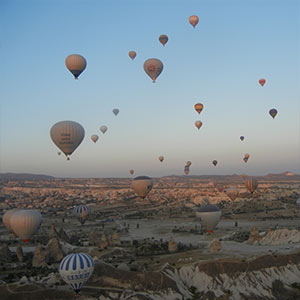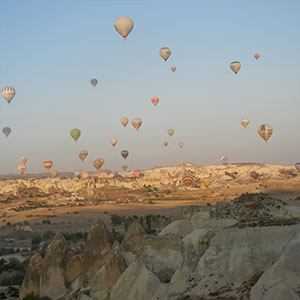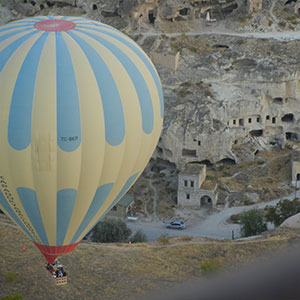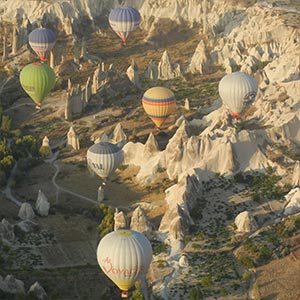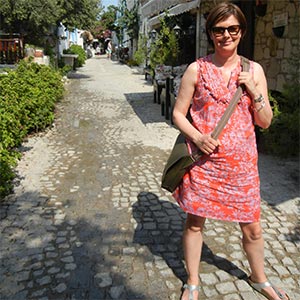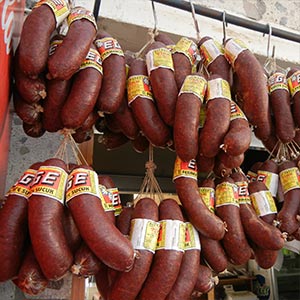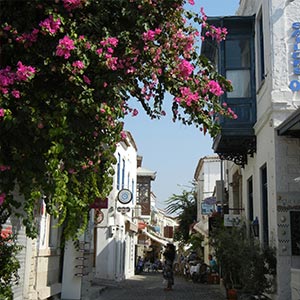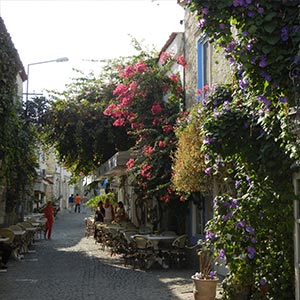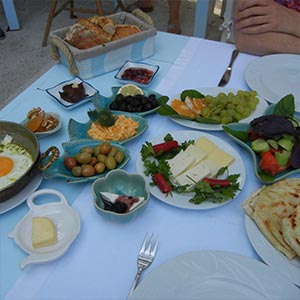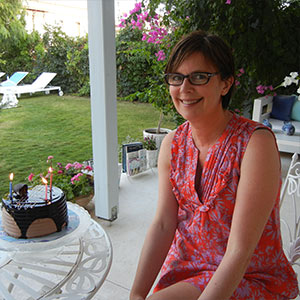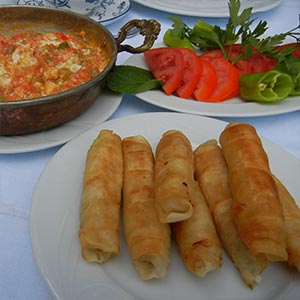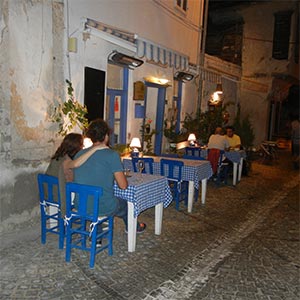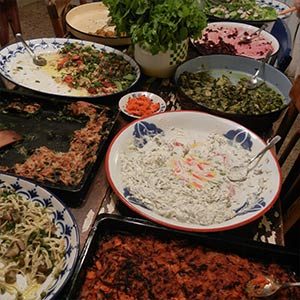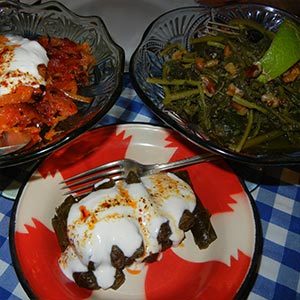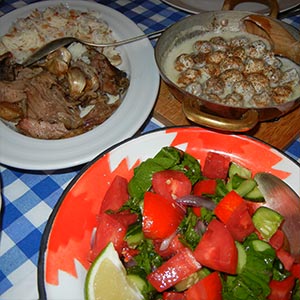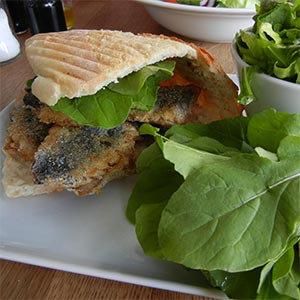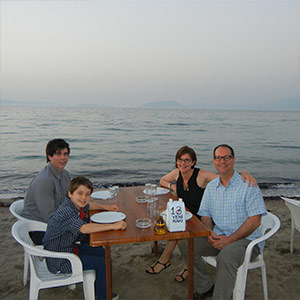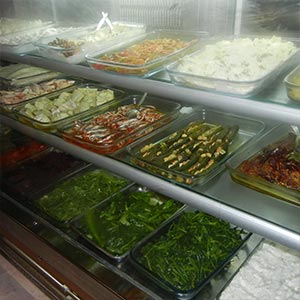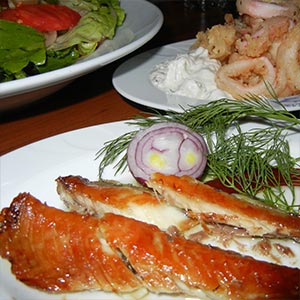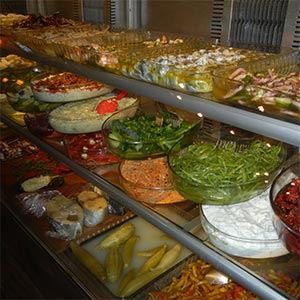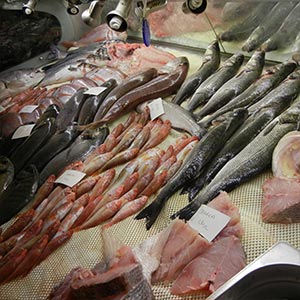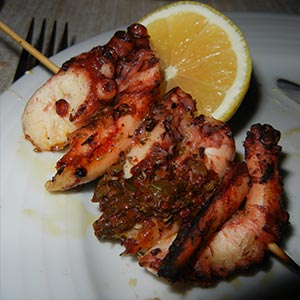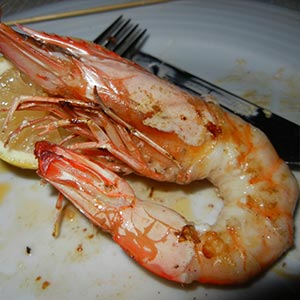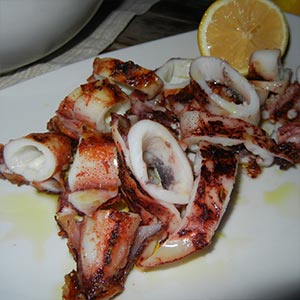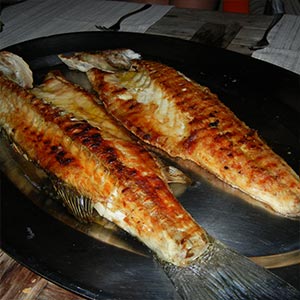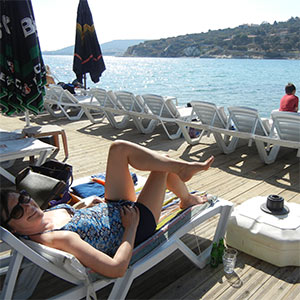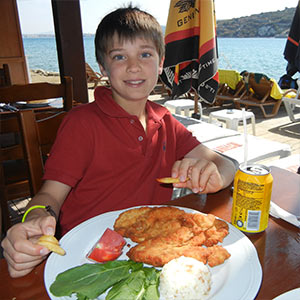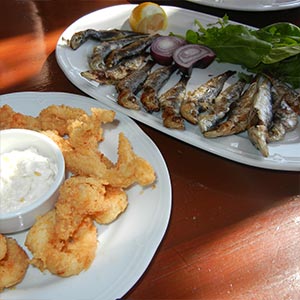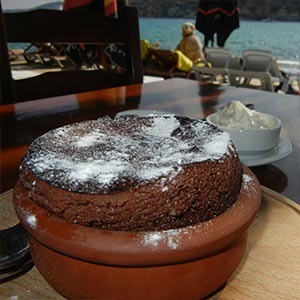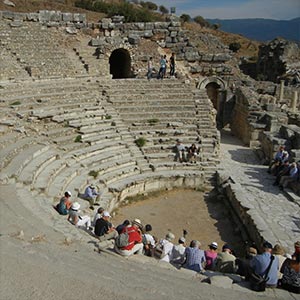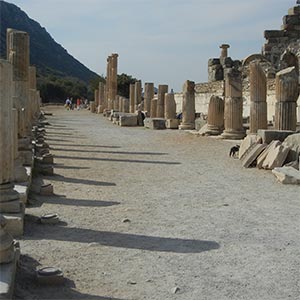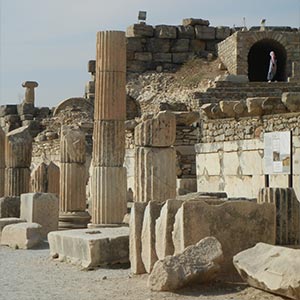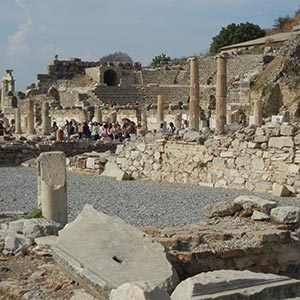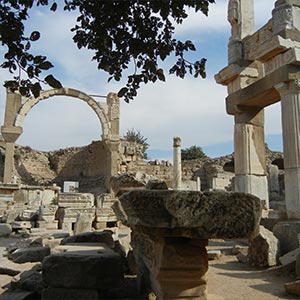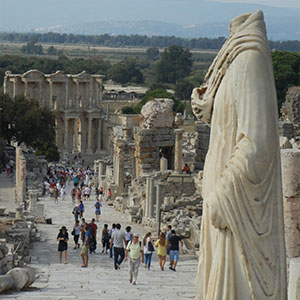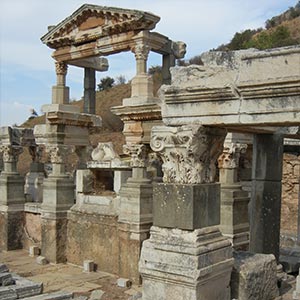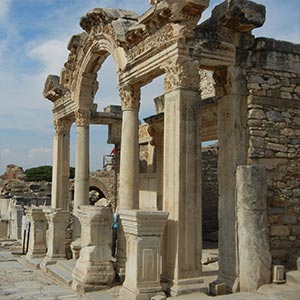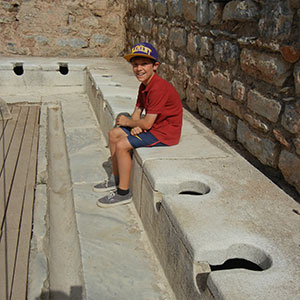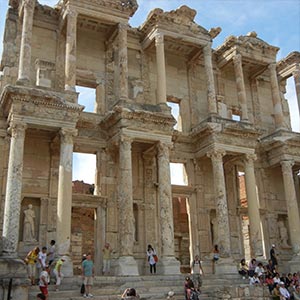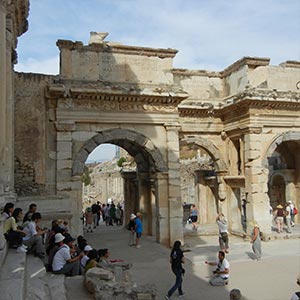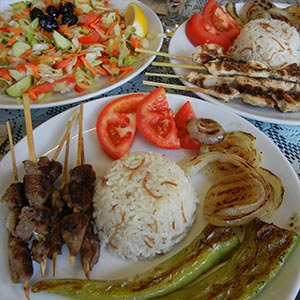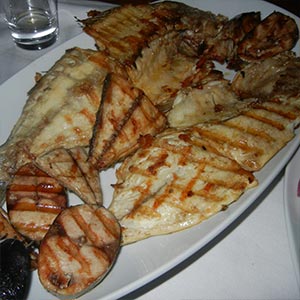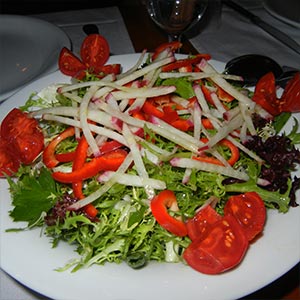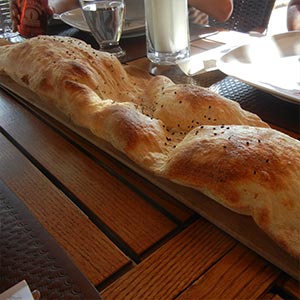Turkey
If Turkey were a meal it would start with a mouth watering meze selection consisting of white cheese, hot pepper paste with walnuts, calamari, yogurt with cucumber and garlic, and rice-stuffed bell peppers, followed by the haunting smoky aromas of a mixed grill from glowing charcoals.
Such a meal symbolises the wide ranging experiences that await the visitor in this wonderful country. One expects, and is not disappointed, with the traditional and well known features, the grand mosques with stunning mosaics, the bustling shopping bazaars and Turkey’s place through the ages. But in İstanbul, as in all of Turkey, expect the unexpected! Fresh local fish grilled over hot coals, sumptuous local wines from Cappadocia and Pamukkale and tranquil walks along the Bosphorus away from the madding crowds.
This travelogue takes you through a two week adventure travelling from the majestic Istanbul, standing astride Europe and Asia, to heartbreaking yet inspirational Gallipoli, to the awe-inspiring landscape of Cappadocia, and finally to seductive Alaçatı. I’ll share with you feasts of traditional Anatolian and classic Ottoman cuisines in sophisticated modern restaurants and rustic regional family establishments, our experience of the vast history of this land, which was once the thriving centre of the world.
İstanbul
Sultanamet, Eminönü and Bazaar Districts
Sultanamet, on the southern side of the Golden Horn, is home to Topkapı Palace, Ayasofya, the Blue Mosque, Basilica Cistern, and the Grand Bazaar while the Spice Bazaar and New Mosque are nearby in Eminönü. With all of these sites so close together it’s not surprising that these districts are also home to hordes of tourists.
Topkapı Palace is an absolute must-see in İstanbul. Home to generations of sultans and their wives, with soporific views to die for over the Sea of Marmara, Bosphorus and Golden Horn.
This opulent palace complex saw a long progression of mad, sad and downright bad Ottomans between 1453 and 1839 before they moved to ostentatious European-style palaces such as Çırağan, built on the shores of the Bosphorus.
The secretive Harem, really just the family quarters, is a warren of lushly-tiled rooms and not to be missed when visiting Topkapı Palace, well worth the price of the separate ticket purchased from the Harem ticket office. This was the imperial family quarters with every detail of Harem life governed by tradition, obligation and ceremony. In Ottoman tradition the word ‘harem’ refers to the Sultan’s family and to where they live.
The Palace Harem was home for the Sultan, the Queen Mother, the Sultan’s women, children, brothers and sisters, servants and concubines, and the Black Eunuchs (protectors of the Harem).
The women of Topkapı’s Harem had to be foreigners, as Islam forbade enslaving Muslims. Girls were bought as slaves or were received as gifts from nobles. On entering the Harem, the girls would be schooled in Islam and Turkish culture and language, as well as the arts of make-up, dress, comportment, music, reading and writing, embroidery and dancing.
Ruling the Harem was the valide sultan, able to influence the sultan on the selection of his wives and concubines and on matters of state. The Ottoman dynasty did not observe the right of the first-born son to the throne, so in principle the throne was available to any imperial son. Each lady of the Harem struggled to have her son proclaimed heir to the throne, which would assure her own role as the new valide sultan.
One of the highlights is the narrow Courtyard of the Black Eunuchs. The Black Eunuchs were mostly from the Central African territories of the Empire. They were trained and educated in the disciplines and rules of the Palace with their main function being to let no one from the outside into the Harem. They guarded the gates, controlling all access points and accompanied the carriages transporting members of the Harem. The courtyard of the Black Eunuchs was probably erected in the mid-16th Century.
The Courtyard of the Queen Mother is situated right in the centre of the Harem in prime position. The Hall with the fireplace (Ocaklı Sofa) opens onto the living spaces of the dynasty.
The Privy Room of Murad III is the oldest and finest surviving room in the Harem. Constructed in 1579 it displays classical late 16th Century Ottoman architecture. A symmetrical pavilion, with a large dome, decorated in blue-white and coral red Iznik tiles.
From the Baghdad Kiosk (Bağdad Köşkü), built in 1639, and from the most recent building, Mecidiye Pavilion (1859), take a moment to pause and breathe in the spectacular view, looking straight down the Bosphorus with the Golden Horn to the left below.
tripadvisor
Sophia in Latin,
Haghia Sofia in Greek and the Church of the Divine Wisdom in English, this outstanding building is İstanbul’s most famous monument.The amazing spaciousness of this now famous museum is hard to overstate with its magnificent domed ceiling soaring heavenward with glittering mosaics. The best examples lurk in the galleries upstairs.
Emperor Justinian had the Ayasofya built as part of his effort to restore the greatness of the Roman Empire. It was completed in 537 and reigned as the greatest church in Christendom until the Conquest in 1453. Mehmet the Conqueror had it converted into a mosque and so it remained until 1935, when Atatürk proclaimed it a museum.
tripadvisor
Blue Mosque (Sultanahmet Camii)
Atmeydani Caddesi, Sultanahmet.Facing Ayasofya across a small park and mirroring its domed silhouette is the
Blue Mosque. Constructed between 1606 and 1616, more than a millennium after Ayasofya.
The small mosque on the corner of the complex houses the tomb of Sultan Ahmed I, the man who gave his name to both the mosque and the neighbourhood. Sultan Ahmet I (r1603–17) set out to build a monument that would rival and even surpass the nearby Ayasofya in grandeur and beauty. Today it’s more widely known as the Blue Mosque.
The mosque’s exterior curves are voluptuous, with six minarets and the largest courtyard of all the Ottoman mosques. The interior has a similarly grand scale: the blue tiles that give the building its unofficial name number in the tens of thousands,
tripadvisor
Located 150 metres southwest of Ayasofya, the Basilica Cistern offers an insight into the complicated system that once brought drinking water into İstanbul. The cistern’s symmetry and sheer grandeur of conception are quite phenomenal. Constructed in the sixth century the cistern is 65 metres wide and 143 metres long, and its roof is supported by 336 columns arranged in 12 rows. It once held 80,000 cubic metres of water, pumped and delivered through nearly 20 kilometres of aqueducts.Don’t miss the upside-down head and the side-ways head of Medusa that forms the bottom of two columns, proof that Byzantine builders saw Roman relics as little more than reusable rubble.
By the way the cistern was used as a location for the 1963 James Bond film ‘From Russia With Love’.
tripadvisor
With its very pleasant street side setting
Paşazade is the ideal spot to do some people watching while sipping a delightful Anfora Cabernet Sauvignon from Güney, in the Cappadocia region. Medium-bodied with clean fruit and soft tannins, a bit like a Bordeaux.For Meze (Mezeler) tonight it was Arap Tava, fried mince and veal with onion and peppers served on hummous, and Roasted Spinach Roots (Ispanak Kökü Kavurması), chopped and sautéed with onion and spices.
The Stewed Duck (Ördek Yahnisi) served in a mighty iron pot was the stand out dish of the evening. Tender and succulent slow cooked boneless duck, complimented by a traditional pilaf.
We also enjoyed the Sultan’s Chicken Rolls (Tavuk Sultan Sarma), roasted chicken leg filled with pistachio, spinach and goats cheese.
We were very pleased with our choice tonight and Rory topped it off with Dondurmalı Ekmek Kadayıfı, a crumpet in thick syrup with ice cream.
tripadvisor
We had heard good things about
Khorasani Restaurant so we thought we would check it out. But when we arrived we were told it was fully booked. A very good sign. Seeing our disappointment the waiter offered us a very unique solution. He walked us down the street into
Kayıkçı Restaurant and gave us the Menu for Khorasani Restaurant. Waiters arrived with our food from the kitchens of Khorasani through the front doors of Kayıkçı and the waiters in Kayıkçı still provided wonderful service as we ordered our drinks from the Kayıkçı drinks list. Amazing!A Mixed Meze Plate for two (Karışık Balik Tabağı 2 kişilik) to get us started followed by a wonderfully smoky Mixed Seafood Grill (Izgara Deniz Ürünleri) with grilled octopus, calamari, king prawns, sea bass, and skewered swordfish, served with leafy rocket and chips. While the boys ordered Pizza; a Margherita and a Capricossa – spare me!
For desert we shared İncir Tatlısı, a fig desert with walnut and served with fresh cream (kaymak)
tripadvisor
Matbah Restaurant has a beautiful space, a large garden balcony open to the evening skies. The setting is wonderful. Given there is such fantastic food on offer pretty much everywhere in İstanbul we were expecting a wonderful meal to match this scene. But what can I say? The service can best be described as “try (too) hard”! A bit of a laugh really, watching the unfortunate waiter struggling to balance a tray of meze dishes in one hand while attempting with only a fork and spoon to serve each dish to the table ‘silver service’ style. Then the food just didn’t come up to scratch, more on the bland side. Overall a very disappointing evening.
tripadvisor
There is shopping anywhere and everywhere in İstanbul, but our little haven of a shop was ‘ZETA Collection’. Charlie, from Afghanistan, set up this delightful shop and of all things he loves Cricket! His service is first class and his English is perfect. If you are after hand painted plates and bowls of all shapes, sizes and designs or hand painted porcelain tiles or silk pashminas, then check out Charlie’s shop. It’s a 5-10 minute walk up the hill from Serick Tram Stop.However, I can’t be sure Charlie and his shop are still there. If anyone has any updates I’d love to know.
Bazaar District
No visit to İstanbul would be complete without stepping into this labyrinthine and chaotic bazaar.Starting as a small masonry covered market (bedesten) built during the time of Mehmet the Conqueror (1432-1481); the bazaar grew to cover a vast area as neighbouring shopkeepers put up roofs and porches. Finally, a system of locked gates and doors was provided so that the entire minicity could be closed up tight at the end of the business day. Today, the bazaar has 16 hans (caravanserais), 64 lanes, mosques, banks, a police station, restaurants, workshops and more than 2000 shops, making it a world within itself.
Make sure you walk down as many side streets as your time will allow digging out tiny boutiques and workshops. Visit shops, drink tea (çay), compare prices and bargain.
tripadvisor
Harran Kebap Yemek Salonu, down an alleyway on the left off Tacirler Sokak, in the uncovered Silverware section, beyond the Oriental Kiosk that’s within the covered Bazaar.
What a find! We stepped out of the Grand Bazaar and walked a narrow street in the ‘Silver Section’, the wafts of charcoal grilled kebabs coming from a very narrow laneway caught my attention, as did the refrigerated cabinet displaying a range of kebabs. The broad smiling owner waved us to a table in the laneway. Mixed Kebab (Karışık Kebap) was the easy choice. But first some tea, while our kebabs are grilled. Then a huge platter arrives, piled with minced lamb kebabs (köfte), eggplant, chillies and tomatoes on a bed of rice, with Bread (pide) and a beautifully fresh salad of ripe tomatoes and rocket with a simple lemon juice and olive oil vinaigrette. Such fantastic food in a very basic laneway setting, served from what is fundamentally a ‘hole-in-the-wall’ cafe. Gotta love it!
tripadvisor
İstanbul Street Food
Dürümcü Mustafa, Kılıççılar Sokak, near the corner of Vezirhan Caddesi.
If you are roaming the streets just to the east of the Grand Bazaar straight down from Çemberlitaş Tram Stop, make sure you make your way here for some great street food. Brilliant kebabs and charcoal grilled peppers or perhaps a döner from next door. We are literally sitting on the road of the busy street on tiny stools and tables “a la Hanoi” tucking into Charcoal grilled Chicken Kebab (kömür ızgara tavuk kebabı), Mixed Mince kebab (karışık kebap kıyma), Grilled Green Capsicum/Pepper served on peppered flat bread (Biberli Ekmek) and from next door Döner – Chicken (döner tavuk) and Veal (döner Dana)
The peppered bread was way too spicy for Liam and he looks as though he is going to explode. He can hardly get his words out. His mouth is on fire and his lips are turning scarlet with blistering beginning to surface. Not a pretty sight. Jill is quickly to the rescue with more street food from a nearby cart – a sweet, syrupy almond cake rolled in coconut. The fire has been quenched and the crisis averted. Not sure that Liam will be venturing down the path of grilled capsicums on peppered bread any time soon. It certainly added a little drama into our day.
tripadvisor
Turkish Bread (Pide)
In every restaurant and along almost every street you will catch the tempting aromas of freshly baked bread (Pide). Be it Feta Cheese Pide (Peynirli Pide) or Ground Beef Pide (Kiymali Karadeniz Pidesi) or simply plain Pide to tear off and smear through a multitude of dips. You just can’t get enough of this addictive fresh food.
Simit, Corn, Donuts, Chestnuts …
Perhaps you’ll be tempted by carts along many streets and in squares selling everything from Simit, a bread ring encrusted with sesame seeds, to Corn, to syrupy Donut balls or maybe some toasted Chestnuts. Oh, and you’re never too far from a shop window piled high with all varieties of sweet Baklava. You might then want to wash it down with a freshly squeezed Pomegranate and/or Orange Juice. Be warned the Pomegranate on its own is so tart I strongly recommend that you get some sweet orange juice mixed with it. Even then it still made my eyes water.
Börek
In Liam’s case the temptations continued right through till departure at İstanbul airport. A layered pastry/cheese slice cooked in huge slabs/wheels caught Liam’s eye. Slices of this classic Turkish snack are available in many street-side cafes throughout the city, not just at the airport.
Eminönü
Spice (Egyptian) Bazaar Cicek Pazari Sokak, Eminönü, runs along the back of the Spice Bazaar. It’s adjacent to the New Mosque and best entered from there.
A beautifully preserved building built in 1660 as part of the New Mosque complex, it was originally called the Egyptian Market because it was famous for selling goods shipped in from Cairo and it has always been associated with the sale of spices.Though sadly today there are more shops selling jewellery, clothing and tourist trinkets than spice but the displays in the ones that do sell spices are brilliant. Piled high are beautiful displays of spices (baharat), nuts, honeycomb, figs (incir), sheets of pressed fruit and no visit would be complete without sampling and leaving with a bag of Turkish Delight (lokum). Nothing like the fake Turkish Delight from home, but subtle, melt in your mouth taste sensations.
The western street outside the Spice Bazaar, Tahmis Sokak, is also well worth exploring with stalls lining the street selling cheese, fish and olives in plentiful supplies.
While you are in this area don’t miss exploring the narrow nearby streets/lanes. Go for a walk along crowded Kutucular Caddesi and the really interesting intersecting side streets – narrow alleys where the locals do all their shopping. Everything from coffee to pots and pans can be found.
Only in İstanbul would a 400-year-old mosque be called ‘New’. Dating from 1597, the interior is richly decorated with gold leaf, coloured İznik tiles and carved marble.The mosque was created after Ottoman architecture had reached its peak. Consequently, even its tiles are slightly inferior products, the late 17th century having seen a diminution in the quality of the products coming out of the İznik workshops.
tripadvisor
Tarihi Eminönü Balık Ekmek, Eminönü Square, south-western side of Galata Bridge on the Golden Horn.
Fish Sandwich (Balik Ekmek), what a wonderfully simple and brilliant meal. Grilled Mackerel fillets on a crusty roll, a squeeze of lemon and a pile of rocket. Absolutely delicious! Balik Ekmek is a favoured fast food in İstanbul and the place to eat it is in Eminönü Square at one of the row of outdoor cafes adjacent, facing the Spice Bazaar. Hundreds of Mackerel Fillets are being grilled onboard boats bobbing about on the Golden Horn. Waiters on shore take your order and the hard working cooks prepare the rolls and hand them to the waiters on shore to feed hundreds of hungry hounds waiting patiently under canopies.
tripadvisor
Cruise on the Bosphorus, departing from Eminönü Square
There are as many cruise operators as there are touts. We selected a 1.5 hour TurYol cruise leaving from the wharf behind the ticket office immediately after the three Fish Sandwich (Balik Ekmek) Boats/Cafes on the Golden Horn in Eminönü, along from the Galata Bridge. The cruise takes you up the bluer than blue Boshphorus passing numerous grand Ottoman timber houses, Palaces and Castles, as well as people strolling along the water’s edge or sitting by charcoal bbqs in parks adjacent to the Bosphorus. Cafes and restaurants are dotted along the shore line, particularly in the Ortaköy District. Soon after passing under the Faith (Fatih) Bridge, the second span across the Bosphorus connecting the European and Asian continents, the boat turns around and heads back with the majestic Sultanahmet skyline of silohoutted mosques and minarets coming into view.
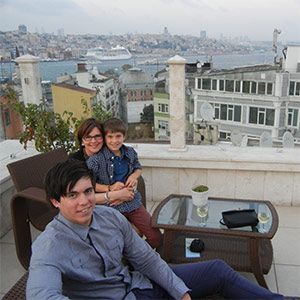
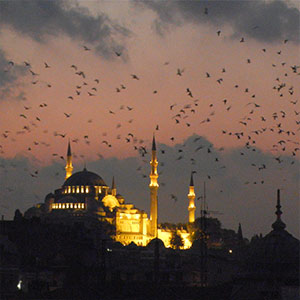
The
Neorion Hotel is fine! A great location being within walking distance of all of the sites to be found in Sultanamet and Eminönü Districts and don’t worry if you’re getting foot weary from all that walking because it’s located right on the tram line. Probably the best part of the Hotel is the Turkish Bath and Pool. It was great fun dressing in our robes then relaxing on the hot marble, ladling water over oneself with steam cleansing the pores. Well Jill and I found it relaxing, the boys were more interested in seeing how many laps they could complete from the pool to a steam room, back to the pool and then to yet another steam room.Many hotels have rooftop terraces with not to be missed sunsets, the Neorion is no exception. With aperitif in hand headed up to the roof to soak up the atmosphere of the magnificent mosques and minarets profiled against the changing colours and light of the setting sun, with dozens of birds soaring above adding to this memorable scene. It would be fascinating to know the version of this scene from the couple at the table next to us. I’m imagining their focus would be on the outrage of children being here outside European school holidays, judging by the looks we were getting from the moment we sat down.
tripadvisor
It’s a bit of a schlep to get there, tucked away in the little-visited Western District of the city, but the restored
Chora Church/Museum, built in the late 11th Century, offers a stunning glimpse of late Byzantine splendour. Its walls and ceilings are adorned with glittering mosaics and breath-taking frescoes. Just like Ayasofya it has made the journey from Byzantine church to Ottoman mosque to modern museum.Virtually all of the interior decoration dates from 1312 and was funded by Theodore Metochites, a poet who was auditor of the treasury under Emperor Andronikos II (r 1282–1328). One of the museum’s most wonderful mosaics, found above the door to the nave in the inner narthex, depicts Theodore offering the church to Christ. The mosaics, which depict the lives of Christ and Mary, are simply stunning.
The most efficient way to get to this part of town is to catch a taxi, although you can catch a ferry from Eminönü but that leaves you with a steep hike up to the Church.
tripadvisor
Beyoğlu and bohemian Cihangir districts
Galata Bridge
The
Galata Bridge spans the Golden Horn from Karaköy on the north to Sultanahmet on the south. This quite ugly bridge, built in 1992, is best appreciated at sunset when up the hill the historic Galata Tower is surrounded by shrieking seagulls and the mosques atop the seven hills of the city are silhouetted against a soft red-pink sky.During the day, the bridge carries a constant flow of people crossing to and from Beyoğlu and Eminönü, a handful or two of hopeful anglers trailing their lines into the waters below, and underneath, restaurants and cafes serving drinks and food all day and night.
tripadvisor
Apart from an array of fresh seafood stalls there are also a few very basic fish eateries dotted throughout the market. Fish grilled over charcoal, bringing out the delicate flavours, will always be a lasting memory of our visit to Turkey. The best choices for each season are:
Summer/Autumn: Leer Fish; Red Mullet; Bonito; Gilt-headed Bream; and Swordfish
Autumn: Sea Bass (our favourite) and Mackerel, best eaten as a Fish Sandwich (Balik Ekmek)
Autumn/Winter: Anchovy and Bluefish.
Spring: Turbot and Whiting.
You can get a bird’s-eye view of everything from the balcony at the top of the Galata Tower in Beyoğlu, the modern part of old İstanbul. Built in 1348, the tower once formed part of a sub-city belonging to the Genoese that stretched right down to the Bosphorus.
tripadvisor
Facing Galata Tower on the square is
Güney Restaurant. Experience tells us never to eat in a cafe facing a major landmark attraction, usually twice the price and half the quality but not this time.Pide filled with the now familiar white cheese (Kaşar) and herbs, this classic Turkish cheese is spectacular; it melts perfectly and is used in many dishes from Calamari to Pide. A Mixed Grill of kebabs, chicken and lamb, all with smoky charcoal flavours that I just can’t resist, particularly when accompanied with an eggplant/aubergine stew. All washed down with an ice cold Efes dark beer, finding them a bit difficult to resist as well.
Where ever we went in this bustling city we felt at ease, to such an extent that we were never concerned when Rory took himself off to the loo sometimes up three flights of stairs. But on this occasion he was gone for quite a while, so we dispatched Liam to check on him. Liam quickly returned reassuring us “he’s fine”. A few minutes later Rory appears, traumatised. He was stuck in the loo, unable to get the door open and not quick enough to ask Liam for help as he was heading back to his nosh. Nice one Liam!
tripadvisor
Beyoğlu rises from the Galata Bridge and is the heart of modern İstanbul. Stroll along Istiklal Caddesi exploring the side streets with cosmopolitan shopping, cafes, bars and restaurants. It’s best to start at the
Taksim Square end as the walk will then be downhill in the direction of Galata Tower.
‘Blue Pearl’ Apartment, Kumrulu Sokak, Beyoğlu/Chihangir (near the bottom of Kumrulu Yks. steps).
We booked ‘Blue Pearl’ Apartment through the incredibly helpful Serdar of
Cast – İstanbul. It may not be the best street in the neighbourhood but the apartment is superb and wow what a fantastic view. Sitting out on our deck with an aperitif watching the evening lights of İstanbul appear with the backdrop of the setting sun and the skyline of mosques and minarets. It’s got to be one of the great sights of the world; Jill commented “it’s a bit like sitting back and watching the changing colours as the sun sets at Uluru”. Then to wake and have breakfast on the deck, it doesn’t get much better than this.The apartment is wonderful and easy to stock up with a few supplies from the local
Carrefour Express mini-market,
Siraselviler Caddesi, 74/A Cihangir & 113 Taksim..
tripadvisor
Cafe Susam
Cafe Susam, on the corner of
Kumrulu Yks. and Susam Sokak, Beyoğlu,, is located at the top of the flight of stairs leading down to our Apartment (‘’Blue Pearl’) and it is therefore a regular stopping point for us, particularly as they have free Wi-Fi. It’s a great spot, very
“cool” in the evening, an easy place to dwell with coffee, Baked Chocolate and Ice Cream or a slice of fluffy Cheesecake smothered in a berry topping.
Kardeşler Cafe on a busy corner with tables and chairs edging the footpath is a great spot to soak up the local Beyoğlu atmosphere away from the bustle of tourists. Tea (çay) for me, coffee for Jill and Liam and breads straight out of the oven to share. A flat bread with sheep’s cheese (Kasleri Pide) and one with cheese and savoury minced meat (Kusbasili Pide). Both hit the spot and we decided to also share a thick set custard with a deliciously bitter sweet caramel baked over the top (Kazandibi). Oh and of course still time for our appetites to be rekindled later tonight when we head out for dinner.
We loved the food and service at Hayat Cihangir so much that we went back a second time. On the inside page of the Menu is a letter which says in part:
“Dear Guest,
Our traditional İstanbul restaurant will welcome you with a selection of various Mezes … choose the ones you like. Our Mezes are prepared with homemade Virgin Olive Oil. … After the Mezes our waiter will ask you to choose a warm appetizer or salad. In addition to our main course menu we are offering Fish of the Day…”On both our visits we took up this welcoming invitation to well and truly sample the Meze selection presented on a huge tray by our very accommodating waiter. What a tough decision, I want them all and across our two visits I think we might have gone pretty close to doing so: green olive tapenade; mackerel; fresh broad beans in olive oil; herbed yoghurt; eggplant with fetta, pistachio and walnuts (Giritli); haddock steamed in lettuce leaves; fava bean paste; sea bass with mustard seeds; and crab mousse (Tarama). To name just a few.
Without doubt the outstanding pick of the warm appetisers was the Calamari stuffed with fresh cheese (Kaşar). Tender calamari with velvet smooth and salty cheese, what an amazing combination.
We couldn’t go past Sea Bass as our ‘Fish of the Day’ choice, with smoky aromas from the charcoal grill, heavenly through every morsel, arguably the best grilled whole fish I’ve ever eaten. Served with a side plate of rocket and lemon wedges, so simple! On our second visit we went for whole Bream and Bonito, once again grilled over charcoal and cooked perfectly.
We are continually blown away by the unexpected freshness and flavours of the salads. Turkey is known for its delicious tomatoes and these plump morsels were bursting with flavour, topped with shredded radish, a variety of green leaves, hints of fresh mint and parsley, with a simple lemon dressing. A wonderful accompaniment to the fish.
tripadvisor
Ortaköy District
We are in
Taksim Square (
tripadvisor) to meet our dear friend Yesim, an İstanbul local. Yesim suggests we jump in a taxi to explore Ortaköy. Despite the sometimes horrendous traffic to get there, a visit to Ortaköy, located along the Bosphorus, with beautiful old houses and wonderful Bosphorus views is worthwhile.
Ortaköy is one of the nicest neighbourhood districts in the European side on the Bosphorus Strait. In Turkish it means “middle village” because it was in the middle of the strait.
Ortaköy has many cafes and tea houses around a square near the water or in the alleys, moderate or expensive restaurants, bars and small shops. Many night clubs are also in this area, on the Bosphorus.
There is no better demonstration of Turkey as a secular state than Ortaköy centre. Within a triangle are a Muslim mosque, a Christian church, and a Jewish synagogue.
A site of interest in Ortaköy district is Çırağan Palace Hotel. Originally one of the palaces built by the Sultans when they vacated Topkapı Palace for European style accommodation on the shores of the Bosphorus.
We are back in another taxi and on our way to meet up with my great Turkish mate Bora, Yesim’s husband. We find him in
The House Cafe, a very cool open-air bar/restaurant. What a fabulous location with the Bosphorus lapping up to the edge of this laid back modern bar.
tripadvisor
After our Ortaköy district experience, Bora and Yesim are taking us to Vogue Restaurant for dinner. A very modern Turkish restaurant on top of the Beşiktaş Plaza office tower. We are seated out on the terrace with a spectacular 180° view.
As the sun sets, the night lights of İstanbul appear from the Bosphorus/First Bridge (Boğaziçi Köprüsü) to the north, across the Bosphorus to Asia and south to the joining of the Bosphorus with the Golden Horn. The silhouettes of the mighty mosques of Sultanahmet create a sculptured horizon.
And the view is matched by the Menu. A Meze Platter (Meze Tabagi) of kibbeh, butter beans in tomato sauce, fried stuffed zucchini flower, potato salad and picked vegetables. Our main courses included: Veal Cutlet (Dana Külbastı) with warm eggplant and charred tomato sauce; Baked Lamb Shank (Fırınlanmış Kuzu İncik) with orzo risotto and morel mushroom ragout; and Roast Duck (Ördek Fırında) with wild rice, spicy carrot and dried fruit sauce. For desert we all dug in to sample a warm Chestnut Cake with Coconut Sorbet (Sıcak Kestaneli Kek Hindistan Cevizli Sorbe).
tripadvisor
Asian side
Many ferries to the Asian side depart from Eminönü; however we departed from a small pier in Kabataş, adjacent to the Kabataş tram stop on
Meclis-i Mebusan Caddesi. What a hive of activity with passengers alighting and boarding ferries to many of the neighbourhoods on the Asian side of İstanbul.As we approach the Asian side (
map) after the relatively short trip across the Bosphorus we are greeted by the grand sight of the
Haydarpaşa Terminal standing resolutely on the foreshore. Haydarpaşa station opened in 1872 and is the busiest rail terminal in Turkey.
Jumping in a taxi not far from the ferry terminal we speed off toward Baghdad Street (Bağdat Cd.) and lunch nearby at Suadiye Restaurant.
tripadvisor
Baghdad Street, Asian (East) side, Bağdat Caddesi
The Asian side’s most fashionable shopping street, Bağdat Caddesi contains numerous high-end retail outlets and malls as well as plenty of restaurants, cafes, and bars.shopping malls, department stores, fashion garment stores, elegant shops offering world famous brands, restaurants of international and local cuisine, pubs and cafes. Its name – Baghdad Street – dates back to the reign of Sultan Murat IV, when it was a thoroughfare for Ottoman armies on the way to Baghdad. Today the “Cadde,” as it’s popularly known, is a great place to shop, go for a stroll, and see and be seen: be sure to look your best when you go there! Most of the stores you’ll want to visit are found in the stretch between Erenköy and Suadiye.
tripadvisor
Just off the chic Baghdad St. is the very smart Suadiye Restaurant. The menu is a celebration of modern Turkish cuisine; however I’ve given a nod to tradition by selecting the Diced Lamb fried on an Iron Plate with peppers, tomatoes and shoestring potatoes, served with Tortilla bread. Liam has followed my lead going for the Kebap, grilled beef and meatballs served with yoghurt, shoestring potatoes and pitta bread. Jill on the other hand has gone for the Seafood Salad. I think Liam and I made the wise choice! A beautiful setting with a menu selection to match.
Gallipoli (Gelibolu) Peninsula map
Gallipoli is an elongated 40-50 kilometre peninsula, a good four or so hours drive south-west from İstanbul, and a commemorative site for the British, Australian, New Zealand, French and Turkish forces who fought, died and were wounded there.The Battle of the Dardanelles was very costly for both sides, with a 60% casualty rate. 220,000 for the Allied forces and 253,000 for the Turkish forces. An incredibly touching inscription on a massive monument reads:
“THOSE HEROES THAT SHED THEIR BLOOD
AND LOST THEIR LIVES …
YOU ARE NOW LYING IN THE SOIL OF A FRIENDLY COUNTRY.
THEREFORE REST IN PEACE.
THERE IS NO DIFFERENCE BETWEEN THE JOHNNIES
AND THE MEHMETS TO US WHERE THEY LIE SIDE BY SIDE
HERE IN THIS COUNTRY OF OURS …
YOU, THE MOTHERS,
WHO SENT THEIR SONS FROM FAR AWAY COUNTRIES
WIPE AWAY YOUR TEARS;
YOUR SONS ARE NOW LYING IN OUR BOSOM
AND ARE IN PEACE
AFTER HAVING LOST THEIR LIVES ON THIS LAND THEY HAVE
BECOME OUR SONS AS WELL.”
ATATÜRK, 1934
In Turkey, the battle is perceived as a defining moment in the history of the Turkish people—a final surge in the defence of the motherland as the centuries-old Ottoman Empire was crumbling; and in Australia and New Zealand, their sacrifice and heroism in this military defeat marked the birth of a separate national consciousness in both countries.The peninsula is named after the town of Gelibolu, on its north-eastern tip, near where it connects to the rest of the mainland. The battles took place in scattered locations around its southwestern end, where the peninsula fronts the Aegean Sea on a coastline full of cliffs.
This peninsula is strategically significant because it’s at the entrance of the Dardanelles, the supply route to Russia via the Sea of Marmara, Bosphorus, and the Black Sea.
Anzac Cove (Anzak Koyu)
The area around Anzac Cove is particularly significant for Australians and New Zealanders, whose armies received their baptism of fire on the cliffs there, and carved a fine military reputation under extreme adversity and enormous loss of life. The 1915 landings and battles are commemorated by Australians and New Zealanders on ANZAC Day, 25 April, every year.
It was on this spot on 25 April 1915 that the ill-fated Allied landing began. The first thing that strikes you as you look up from the beach is the extent of the cliffs facing this particular beach. The nearby beaches along this stretch of the Aegean Sea (Ege Deniz) have far gentler slopes. The ANZAC’s fate was sealed.
As you begin the ascent from Anzac Cove you come to Mehmetciği Derin Saygı Anıtı monument dedicated to the Turkish ‘Mehmetçik’ (little Mehmet or ‘digger’) who on hearing the cries for help from an Allied soldier severely wounded, raised a white flag, stepped from his trench unarmed and walked into the battlefield, bent down and picked up the badly wounded soldier and carried him to the Allied trenches. Then turned and walked back into the Turkish trenches to resume the battle. Something unique and special was developing in the character of both the Turks and ANZACs among this bloodshed.
Less than one kilometre, “as the crow flies”, up and over the hills is Lone Pine (Kanlısırt). Australian forces captured the Turkish positions here on the afternoon of 6 August 1915. In an area the size of a soccer field 7,000 soldiers lost their lives in the four day battle for this tiny patch of land. To be able to have stood here shoulder to shoulder with my Turkish mate Bora was very poignant, a moment I’ll never forget.
Almost a kilometre further up the hill is the
57 Alay (57th Regiment) Cementery.The 57th Regiment was led by Mustafa Kemal (later to become Atatürk). As the ANZACs made their way up the slopes on 25 April, Mustafa Kemal called his regiment together and issued a famous order:
“I am not ordering you to attack; I am ordering you to die. In the time it takes us to die, other troops and commanders will arrive to take our places”. His regiment was wiped out but they held the line and inflicted heavy causalities on the ANZACs. The limit of the initial attack on 25 April was only 200m further up the hill.
A further 500m up the ridge at the top of the hill is Chunuk Bair (Conkbayırı). This strategic point was at the heart of battles from 6 to 10 August with 30,000 soldiers dying on this ridge.
Chunuk Bair (Conkbayırı) is the highest point of Gallipoli with superb views of the strait and surrounding countryside, a strategic vantage point for Mustafa Kemel. Here stands the Atatürk Anıtı (Memorial) to Mustafa Kemel with the New Zealand National memorial adjacent.
British and French troops landed on the Southern Peninsula (
map) where
Çanakkale Martyrs’ Memorial (Çanakkale Şehitleri Anıtı) stands. A gigantic 42 metre high memorial to all the Turkish Soldiers who died at Gallipoli. The memorial is atop a hill overlooking
Morto Bay. Jill read to us postcards from her Great Uncle Charlie to his sister, mentioning his departure from Egypt to join the Gallipoli campaign. We understand that he would have fought his way up the hill on a line adjacent to where this memorial now stands. It was yet another incredibly moving moment in a day of many.
59 Tekirdag Köfteisi Cafe/Restaurant, Alçıtepe, Çanakkale
Towards the southern tip of the Gallipoli (Gelibolu) Peninsula is the small village of
Alçıtepe. There is really only one main street and smack in the middle of it is this wonderful local cafe. Step off the street and walk through the dining room to a large under cover outdoor area. This place certainly isn’t flash or pretty but the food is fantastic. No English is spoken and no English menus but luckily we have Bora with us, who orders a small feast of Gozleme, filled with silky cheese, Köftei, very similar to Lebanese meat balls, grilled chicken and a mixed salad. We continue to be pleasantly surprised that almost everywhere you go from high end restaurant to a local cafe in a small village like this one; the food is constantly of a wonderfully high quality
Cappadocia (Kapadokya) (map)
People are drawn to this majestic jewel of central Anatolia because of the haunting panorama of spectacularly eroded tuff (hardened volcanic ash) that has made this a fertile area for agriculture. Grapes, apricots, cherries, sugar beets & chickpeas are grown locally.Cappadocia was settled from 1800BC to 1200BC. Then came the Persians, followed by the Romans. Not only is the landscape bewitching but the human history here is equally mind blowing.
Göreme Open Air Museum (Göreme Acikhava Muzeszlonastry) (map)
What an extraordinary site. A vast monastic complex composed of scores of refectory monasteries placed side-by-side, each with its own fantastic church, prayer rooms, and living quarters all hollowed out of the rock face by monks over the 10th, 11th, and 12th Centuries. This was really akin to a university campus, with both genders being taught. Incredible!Over time many of the external walls have crumbled or collapsed revealing a unique cut-away profile into these amazing structures. Step inside to find walls and ceilings with elaborate frescoes depicting biblical scenes, such as The Ascension, Mary holding the baby Jesus, Saints and even the church financiers.
Traditionally Muslims believe it’s not right to depict the face of religious figures. Therefore here and throughout Turkey in churches built by Christians you will see many of the beautifully intact frescoes and mosaics with the faces scratched out.
There are eleven refectories within the Museum and structurally one of the most impressive is the Nunnery. A 6-7 storey rock mass containing the dining hall and kitchen on the first floor, together with the ruined chapel on the second level and a church on the third storey. The different levels of the monastery are connected by tunnels, and “millstone doors”, such as those found in the underground cities, and were used to close off these tunnels in times of danger.
The Göreme Open-Air Museum, a World Heritage Site since 1984, is an essential stop on any Cappadocian itinerary and deserves a two-hour visit.
tripadvisor
Amid the vineyards and apricot trees of Monks Valley, we venture into a fairy-tale world. This exceptional natural spectacle of unique rock formations and glorious changes of colour was once the home of the hermitage of Simeon monks. A chapel dedicated to St. Simeon (Simon), and a hermit’s shelter is built into one of the fairy chimneys with three heads. Saint Simeon was living in seclusion near Aleppo in the 5th century, when rumours that he made miracles started to spread. Disturbed by all the attention, he began to live at the top of a 2m high column, and later moved to one 15m in height. From there he only descended occasionally to get food and drink brought by his disciples. The hermits of Cappadocia distanced themselves from the world by cutting into fairy chimneys rather than living on top of columns. They hollowed out the chimneys from bottom to top creating rooms 10 to 15 metres high.Paşabağ valley contains some of the most striking fairy chimneys in Cappadocia with twin and even triple rock caps. This style is unique even for Cappadocia and these fairy chimneys are named mushroom-shaped fairy chimneys.
Peribacalar (Fairy Chimneys) Kapadokya Yürüyüş Yolu were formed when erosion wiped out the lava covering the consolidated volcanic ash (tuff), leaving behind isolated pinnacles that can reach up to 40 metres. The conical shapes are topped by caps of harder rock resting on pillars of softer rock. It should be left to your own imagination as to what these pillars conjure up in people’s minds! Early inhabitants of Cappadocia believed they were the chimneys of fairies who lived underground.
Devrent (Imagination) Valley
Between Avanos and Ürgüp, along
Ürgüp Yolu is the Devrent Valley, also known as Imagination Valley, because of the animal shaped fairy chimneys. There aren’t any of the cave churches, Byzantine frescoes or Roman citadel ruins that are famous throughout the rest of Cappadocia; but what it does have is an incredible landscape shaped by nature to make you wonder and explore.This is a place to let your mind run free in a seemingly lunar landscape with rock formations that look like animals. Walk the trail and you’ll see a landscape filled with snakes, camels, seals and dolphins and whatever else your mind chooses to make of the twisting curving rocks. Maybe even a dragon.
tripadvisor
Sedef Restaurant proves to be the ideal lunch spot after a morning of touring this spectacular area. Soon after taking our seats a huge length of puffed up Pide straight from the oven arrives, together with a dish of diced cucumber, garlic and mint in yoghurt and a wooden platter with a small selection of cheeses. Next an enticing plate of Sebzeli Pide with yellow cheese, tomatoes, peppers and mushrooms.Then a local speciality, Testi Kepap Tavuk. Chopped chicken, tomatoes, peppers, potato, mushroom, onion, garlic and special ottoman sauce cooked in pottery in a stone oven. A huge blade is dramatically used to knock the top off the clay plot releasing the aromas as the contents are poured on to a serving plate. What a presentation. Not to forget the delectable salad of fresh tomatoes, cucumber, peppers, lettuce, olives and white cheese (Akdeniz Salatası).
tripadvisor
Just 2 kilometres out of Göreme on the road to Üçhisar is Panorama Hill, providing a magnificent view of the Göreme Valley. Sit back and enjoy some tea while taking in this magical view.
Üçhisar Castle, once a fortress, is a tall volcanic rock outcrop, visible for miles around, overlooking the Rose and Pigeon Valleys. A breathtaking panorama awaits those prepared to make the short climb from the car park.
tripadvisor
Kaymaklı Underground City was built under a hill known as the Citadel of Kaymaklı and wasn’t discovered until the late 1950s!
These troglodyte cave-cities were excavated as early as Hittite times, 1,200BCE, and expanded over the centuries as various marauding armies traversed Central Anatolia in search of captives and plundering opportunities. There are 36 underground cities in Cappadocia and the widest one is Kaymaklı underground city, while the deepest is the Derinkuyu Underground City.During the 6th and 7th Centuries the Persian and Arabic armies set off to vanquish the Christians. To signal a warning of approaching armies, beacons were lit from as far as Jerusalem to Constantinople. When the message reached Cappadocia the Byzantine Christians escaped into secret tunnels leading to vast underground cities. Kaymaklı Underground City features a maze of tunnels and rooms over eight levels carved into the earth. Some 3,000 people could spend months at a time down there.
The Kaymaklı Underground City has low, narrow and sloping passages. While the underground city consists of 8 floors below ground, only 4 of them are open to the public today, in which the spaces are organised around a vertical ventilation shaft that passes all floors down to a depth of about 80 meters.
While underground one can find areas that were once used as stables, churches, kitchens, storage and even wineries. They would only drink wine when underground, fearful that the water supply from ground level had been poisoned by the marauding armies.
We all thoroughly enjoyed our fascinating underground tour. Oh, except for Jill who after descending the first staircase and being faced with a narrow tunnel went fleeing for the exit, a jibbering wreck. Not an ideal spot for claustrophobics!
The inhabitants of the region still use the most convenient places in the tunnels as cellars, storage areas and stables, which they access through their courtyards.
tripadvisor
Mustafapaşa (Sinasos)
Just to the south of Ürgüp,
Mustafapaşa, still known widely by its pre-WWII Greek name of Sinasos, is an old Greek village whose inhabitants left during the exchange of populations between Greece and Turkey in 1923.A peaceful stroll through the back streets gives insight into a more traditional way of living as a woman passes leading a donkey, while another is tending to a huge pot of tomatoes over an open fire right on the footpath.
If you only stop off for one special lunch while in Cappadocia then make sure it’s the
Old Greek House Restaurant in Mustafapaşa. A lovely rustic feel in this grand old house. As for the food there are all the usual Meze suspects: Grape Leaves stuffed with minced veal and rice (Yaprak Sarmasi); Broad Beans served warm with carrots and drizzled with lemon juice (Barbunya Pilaki); Filo Pastry filled with Feta Cheese (Börek); and of course creamy yoghurt with chopped cucumber and a hint of garlic.Mains didn’t disappoint either. A Shepherd Salad (Coban Salatasi), Veal and Aubergine Stew cooked in a clay pot (Guvec); and charcoal grilled Meatballs. With homemade Baklava with Walnuts (Ev Baklavasi) to finish.
Throughout Turkey every establishment displays a portrait of the great man, Ataturk. Looking over this particular dining room is a huge stunning portrait of the famous man.
Yet another truly sumptuous Turkish spread. Fresh, fragrant and frighteningly simple.
tripadvisor
In 1963 a farmer in the village of Şahinefendi started clearing away dirt and uncovered a panel of mosaics, a finding he knew to be significant. He reported his discovery but was met with silence. Over the years, the buried treasure uncovered in the process of tending his fields included a 1.8m terra-cotta pot and a 3m high Doric column, all dutifully reported and ignored by authorities. At one point he used the Doric column as a support for the balcony of his home. Finally in 2002 authorities took notice.Today, a small patch of land on this farmer’s property is roped off and reveals a 400 square metre Meeting Hall whose main draw is the vibrant mosaic flooring throughout. It’s believed to be the site of Sobesos, a city dating to the late Roman and early Christian period (mid-4th century to 5th century A.D.). The first evidence of a full-scale Roman settlement in Cappadocia.
The first thing that struck us walking toward the Monastery, hollowed out of the volcanic tuff stone in the 13th Century, was the vegetable garden of the family who live here. Tomatoes, pumpkin and grape vines a plenty.The Black Church comprises two parallel naves, both of which end in an apse. Unfortunately the frescoes in this church have been blackened with smoke over the centuries and are difficult to make out. To one side lies the refectory, a huge room which could house 100 people. The monks’ dining room is fascinating with the table and benches having been carved out of the rock. Over the centuries the space where they would have placed their legs has filled with dirt; however the “furniture” shapes are readily identifiable.
Our very knowledgeable guide, organised through our hotel (Serinn House – details below) was adamant we go trekking down through the Red Valley (Kızılçukur Vadisi) and we reluctantly submitted.
Bora must have seen this coming as he had conveniently sprained his ankle earlier in the day! However we were so thankful we did it because it was brilliant, even though quite arduous at the end of a long day, but well worth the effort. Weaving our way along ridges and down through ravines, with Yesim choosing to slide down a number of them (different shoes next time perhaps!). The scenery is spectacular to say the least; Rory spontaneously takes a moment on a cliff top to meditate.Out in the middle of nowhere we came across the unimposing facade of the Sütunlu Church. But step inside and this is not just any old church hollowed out of the cliff face. Inside is a 10 metre high vaulted ceiling and rooms with thick pillars and decorated arches. Further along we pass troglodyte dwellings along cliff faces.
Out of the valley and along a dirt road to Çavuşin, with the old village built right into the tuff rock. Sadly most of it was destroyed in an earthquake some years ago exposing the interiors of the cliff houses, amazing.
Ürgüp
The town of
Ürgüp has a wide offering of restaurants and bars. Be it on a rooftop or a terrace or in a garden and they are all serving fabulous Turkish food right out here in Cappadocia. This area has always been well known for its farm produce, particularly grapes. Wines from Ürgüp are refreshing and light, more European in style than ‘New World’ wines. Drop into the
Turasan Winery, on the Nevşehir road, for tastings of the local drop. There are plenty of upmarket hotels and restaurants, yet the town has retained its village charm.
The setting of
Serinn House is spectacular, up on the hill with panoramic views over the area and Cave rooms set into the hillside. What a place, our wonderful host Eren has created. We were extremely comfortable in a spacious family cave-room for the four of us. One evening just as we flicked the lights off, Liam asks if anyone would like a Turkish Delight?
“Ah, no thanks we’ve just cleaned our teeth!” “That’s ok, it’s the mint one!!” Oh, and it’s worth staying here just for the breakfast on the terrace – fresh figs, cheese, eggs and gözleme.
tripadvisor
Away from Istanbul and way out here in Ürgüp our expectation was rustic simplicity in dining but instead we find charmingly elegant restaurants.
Dimrit, located on a hillside terrace overlooking the town offers traditional dishes beautifully presented. The moment finger Börek, cheese filled pastry fingers (Sigara böreği), land on the table our fingers are snaffling up these wonderful morsels. Hot Hummus with Pastrami (Pastirmali Sicak Humus) soon follows and a Spoon Salad (Kaşık Salatasi) of chopped tomatoes, cucumber and onions tossed in a magical pomegranate molasses dressing.
Our feast continues with dishes including Lamb Tandir (Kuzu Tandır), shoulder of lamb slow cooked in a traditional oven, Beytı Kebap, ground lamb grilled on a skewer and served wrapped in a lavash topped with tomato sauce and served with yoghurt, and Aubergine/Eggplant Kebab (Patlıcan Kebapı), meatballs and aubergine grilled on a flat skewer.
Way beyond rustic simplicity!
tripadvisor
We are perched high on a roof-top terrace and sitting under cream sailcloths;
Ziggy’s is exquisite, from the quirky use of old sewing machine bases for table bases through to the magnificent menu.What a Meze selection: grilled smoky aubergine/eggplant with yoghurt; fava bean puree; stuffed aubergine; potato salad; and yoghurt with cucumber of course.
Everywhere in Turkey Pide is to die for. Don’t you just wish there was a cafe down the road from home that sold breads like these? Our mains included grilled lamb and chicken skewers and Jill was enticed by the lamb liver fillets. All of this topped off with sugar dusted finger pastries served with slices of crisp green apple. Again, exquisite.
tripadvisor
Han Çiragan is yet another example of a modern establishment serving up fabulous food. Without doubt Ürgüp is the foodie capital of Cappadocia. Tonight our Meze consists of a mixed cheese plate (Özel Keçi Tulum Toroslardan) of goat’s milk cheese from Taurus Mountain and sheep’s milk feta (Ezine Peyniri) with walnuts and apricots; mashed broad beans (Fava); a trio of fried aubergine/eggplant (Kızartma Tabağı); and a homemade “ravioli like dish prepared with minced meat and served with garlic flavoured yoghurt.For mains the stand out was the Cappadocian Lamb Stew, with hints of apricot, served with Tagliatelle. (Kapadokya Usulü KayisiliKuzu)
Tripadvisor
Kapadokya Balloons
A 4:30am wakeup call from
Kapadokya Balloons heralds the beginning of this incredible adventure. We trudge about blindly bumping into each other then amble out for our 5:15am pick up. A 5:00am wakeup call would have been fine by the way! On arrival in Göreme we are given our ‘Boarding Passes’ and some coffee and rolls. My eyes are now open and the place is packed and this is just one of the many companies operating balloon rides. Even though everyone is half asleep the chatter is rising as the anticipation of this great experience draws closer. The signal comes and we board a van labelled ‘David’ and head off into the nearby wilderness, passing dozens of balloons being filled with huge fans, some getting into position with their flames alight heating the air in the balloons.We arrive at our balloon and watch with anticipation as David, our very English pilot, directs his team as our balloon is inflated. David then gives the signal for us to board or in our case throw a leg over the basket as best as one can and topple unceremoniously into a corner. Bora’s eyes are like dish plates and he positions himself as comfortably as possible so as not to be able to peer over the edge of the basket. Jill now says she is beginning to feel a bit claustrophobic squashed into this basket. Right then, one with vertigo and another with claustrophobia. Goodo! I turn to David hoping he can mind read “come on; let’s get this thing off the ground so there is no turning back”. As if he was indeed able to read my mind, he gives a long pull on a cord, the flame shooting high into the air and we are aloft, rising gently through the darkness. The first collective “oohs” and “ahhs” are heard as we rise above a ridge to be faced with the first rays of sunrise. Spectacular! The early morning light enables us to take in the awesome sight of a sky filled with colourful balloons, their baskets carrying excited passengers soaking up the spectacular view of a lunar type landscape below.
David asks Rory to conduct the morning count of the number of balloons in the sky. Rory reports there are 85. Hard to believe in peak season there can be as many as 150. Words fail to capture the thrill and the spectacle.
The longer this flight proceeds the more convinced I am that David has modelled himself on the character ‘Lord Flashheart’ (‘Flash’) from the ‘Black Adder’ series, played by the recently departed Rik Mayall. After our rather bumpy landing, getting dragged along the ground and ending up on our side, ‘Flash’, I mean David, in his best British stiff upper lip manner, instructs us to remain on board as he is going to attempt to not only right the basket but to manoeuvre it onto the back of a trailer attached to a 4WD up the road about 50 metres away up a steep incline. Having successfully completed this very impressive manoeuvre, ‘Flash’, sorry David, leaps out of the basket, leaving us still in the basket but now on the back of a trailer with the attached balloon filled with hot air hovering above. He bounds off down the road to a waiting vehicle, bidding us farewell and calling out that a private charter group awaits and he must “fly”. But you know I wouldn’t have wanted anyone else in charge of our craft, David provided a great sense of reassurance.
Back on terra-firma glasses of Turkish Sparkling Wine await for us to toast this unforgettable and highly recommended adventure.
Tripadvisor
Izmir to Alaçatı
We picked up our hire car at Petrol Ofisi, Adnan Menderes Havaalani Giri Si 35210
Izmir, right by the airport terminal. Now how to find our way out of the airport precinct? I asked
“have you got map of the local area?” “yes” was the reply and a map was duly handed over. But it’s a map of Turkey, the entire country! Not that useful in getting out of Izmir airport, however I guess it’s ‘local’ relative to the European and Asian continents? We try our luck on the freeway but we seem to be heading in the opposite direction with signs to İstanbul and Ankara. Just as we are about to turn around Jill spots a sign to Çeşme. Great relief all round.Now I can fully concentrate on this traffic, three lanes belting along at 120 kph, it’s frantic. Luckily the traffic soon thins and we virtually have the motorway to ourselves. After approximately 1.5 hrs we take the Alaçatı turnoff and we are now within a kilometre or so of our hotel, but this motoring “adventure” isn’t over yet. Somehow we seemed to have missed the entire town of Alaçatı, driving right past it as darkness sets in. We are now completely lost in an area of new development near Alaçatı Port.
I step into the nearest hotel to ask for “help!” What wonderful help we received, the hotel receptionist has a map out and is now on the phone to our hotel and they are sending out a rescue vehicle to come and guide us in. I’m known to have a good sense of direction but to this day I still have no idea how we got to Alaçatı Port. I wish I could blame Jill who has a dreadful sense of direction, but I haven’t yet worked out how.
Alaçatı
Many of the old Greek houses in this charming town have undergone relatively recent renovation to become up market boutique hotels or restaurants.
Alaçatı is a foodie’s paradise. There are no specific sites as such however it’s alluring to wander the narrow streets, stop for a coffee or step into a boutique shop or simply admire the beautiful streetscapes. Despite being a lovely place to wander, Jill is still trying to work out how she couldn’t find anything to buy – that’s a first!Slotting in a few days in Alaçatı is perfect for us to relax after some hectic days touring İstanbul followed by long days touring Cappadocia is utterly perfect.
Hiring a car is a good idea when visiting Alaçatı, not only to get from Izmir airport, but to also venture out to the roman ruins of Efes or to just head down for a day swimming in the Agean Sea or dinner on the beach watching the sunset
Located in a quiet back street, only a few minutes stroll to the main streets, lined with cafes, restaurants and boutique shops,
Alura Hotel turned out to be the ideal place for us to stay, particularly for the boys who needed some time to chill. With only 8 beautifully appointed bedrooms this hotel truly has the feel of a gorgeous home away from home. Add the personal care and service from Ipek (the owner) who takes the time to sit with you and ensure all your needs are being catered for and the wonderful service from Erkan (the night manager) and you have the combination for a wonderfully relaxing stay. The rooms are very tastefully decorated and the layout of the rear garden, with an inviting pool, edged by an outdoor lounge/bar area is the perfect design.We awoke on Jill’s 50th in this delightful place with the sound of call to prayer and then Maryann’s scrumptious breakfast feast served in the front courtyard. Fried eggs one day and eggs scrambled with tomatoes and peppers (Menemen) on another, both served in a traditional copper dish. The abundant breakfast table always had delectable cigar shaped pastries (Sigara Börek), flaky filo pastry filled with feta cheese, as well as plates of fresh figs, olives, grapes and of course cheeses, as well as fresh bread and jams. Each day was something different.
We were very sad to leave and thoroughly recommend the Alura Boutique Hotel.
tripadvisor
Ipek the owner of the Alura Hotel has recommended a nearby restaurant and asks Erkan, the night manager, to walk us a few blocks into a beautiful back laneway setting lined with tables outside
Asma Yaprağı. By the way that translates to Vine Leaf (the restaurant’s website is in Turkish but the photo Gallery is well worth a look).What a fabulous restaurant, the owner/chef greets us and we step inside to a family kitchen scene, a central table is laden with meze dishes to select from, one being the first pumpkin dish we have come across. With all the pumpkins grown we were wondering why they don’t serve it more often. Our Meze included: aubergine/eggplant with red peppers (capsicum); wild greens baked with a cheese crust and served with a topping of yogurt, a magnificent local dish; wonderful stuffed zucchini flowers; and okra and chick peas. Now I’m not a great fan of okra but with a sprinkle of salt and a squeeze of lime this truly challenged me to reconsider my harsh judgement.
I pride myself on knowing how to slow roast a lamb shoulder that’s full of flavour and falling off the bone. But I was truly humbled by the wonderfully succulent lamb served here, with loads of garlic and rosemary. I’ve just got to know the secret to how it was cooked. We ask the owner who very happily reveals that the lamb is slow roasted at 120°C for 6 hours in a large dish with the lid on! Having found out her secret I’ve adapted the recipe and cooked it many times back at home and it never fails. Check out ‘Alaçatı Slow Roasted Lamb Shoulder’ in the Recipes section of this site. Beautifully accompanied by a dry red Adakarasi Cabernet Sauvignon from Marmara, a region in north-western Turkey.
tripadvisor
Orta Kahve,
While strolling around this gorgeous little town we pause for an easy lunch at Orta Kahve, with its small terrace and windows opening for an outlook over the square. The classic Turkish Fish sandwich is an easy choice for me. Luscious sardine fillets (Sardalya) grilled and placed between two slices of bread with a pile of fresh rocket and a squeeze of lemon. Simple yet incredibly satisfying.
tripadvisor
Around 5:30pm Ipek, the owner of Alura Hotel, has arranged a Birthday Cake celebration for Jill’s
“big 5 O” birthday. A beautiful chocolate cake complete with candles and a sparkler appears. What a lovely gesture. But hang on a minute, cake at 6:00pm, not long before heading off for a birthday dinner … nah, takes more than slabs of yummy chocolate cake and some beautiful homemade biscuits to diminish the appetite of this crew.Tonight Ipek has recommended what she described as a
“low key, casual restaurant” for Jill’s birthday dinner. It’s a little off the beaten track, rarely visited by tourists, but serves fresh local seafood. Sounds perfect. We’ve followed her directions and in the light of a beautiful sunset we are bumping along a dirt track then pull into a clearing (car park) toward what can best be described as a large tin shed. Looks more like a workshop than a restaurant. Jill suddenly realises she may be somewhat overdressed, so with a quick flick of her wrists, her Diamante ear-rings are whipped off. We cautiously step inside a completely empty restaurant. Broad smiling faces greet us, it’s as if the whole family is waiting for our arrival and with much hand gesturing we are guided through the “shed restaurant” and onto the beach where tables are set on the water’s edge.
Magnificent, absolutely perfect for Jill’s birthday! No menu, no drinks list and no English spoken. So with more hand gesturing indicating we would like a drink I’m led inside to select our refreshments from the fridge! To order our meal its back inside to select Meze plates from another fridge display and then to select our main meal from yet another fridge. Our Meze selections, smoked mackerel, prawns with capers, fabulous mixed greens, and lightly battered calamari that melts in your mouth, are soon delivered to our beach front, water’s edge table.
The haunting smell of fresh fish being grilled over charcoal hangs in the air. We can’t go past the whole Sea Bass (Levrek), mouth-watering and smoky, fantastic. I think this one, not the one at the Hayat Cihangir in İstanbul, is the best whole grilled fish I’ve ever eaten. Got to try cooking it this way, the whole fish is cut down the middle, head on, with the back bone on one half. It appears to be simply grilled on a bbq, yet it doesn’t dry out, and it’s cooked to perfection.
We toast Jill’s memorable day with a Talay Bozcaada, a dark crimson and spicy blend of Cabernet Sauvignon and Merlot. What an unforgettable evening.
Tripadvisor
The area around Port Alaçatı is undergoing extensive and rapid development. Houses, hotels and restaurants all under construction. Many sections as you approach the Marina look like building sites, it’s going to be spectacular when it’s completed. Meanwhile the sometimes dirt road brings us suddenly to a very smart area containing Ferdi Baba. It really is a very, very up-market version of Fethi’nin Yeri – Ada Balik Restaurant (see above). Instead of walking through a tin shed, you walk through a lavish bar area and into the restaurant with a large refrigerated cabinet displaying the Meze selection beside an open refrigerated display of seafood to choose the Main course. Then instead of stepping onto the beach we step onto an open decking literally on the edge of the Marina, filled with luxury yachts. Bright coloured shawls are provided to protect you from the cool evening air.As the moon rises over the Marina we settled in for yet another amazing Meze selection including yoghurt with finely shredded Zucchini, topped with walnuts, a sprinkle of paprika and a drizzle of olive oil, a delicious recipe developed by the local chef and marinated octopus skewers, warmed on the grill and drizzled with olive oil fused with dried oregano.
For mains we are drawn to the king prawns charcoal-grilled and simply served with a squeeze of lemon juice, whole grilled calamari lightly stuffed with dried oregano served sliced and of course yet another wonderful whole Sea Bass (Levrek), grilled perfectly over hot smoking charcoals. Hmmm, now I’m thinking this one is actually the best whole grilled fish I’ve ever eaten. Not the one last night, not the one back at Hayat Cihangir in İstanbul, but this one. Perhaps they are all equally the best!
Tripadvisor
For an idyllic swim in the Aegean Sea head down to the end of a dirt track with virtually no one around other than a few workmen. We have arrived at
Paparazzi, pumping in the height of Summer day and night, but at this time of year (October), with many of the other ‘Beach Clubs’ closed for the season, there is only a handful of locals and we appear to be the only tourists.One of the guests helps with the translation from the waiter that a minimum charge of 40TL per person applies to use these facilities. However this includes lunch and refreshments! So
“hand me the menu please!”
Liam didn’t need to work up an appetite, but has decided to swim across the bay, about 600m there and back. On his return the boys go for chips and schnitzel, in what is nothing more than a beach side cafe, Arif’in Yeri Restaurant. Chips and schnitzel? Not too sure where they think they are. While Jill and I have gone for grilled Sardines (Sardalya Izgara) and Calamari (Kalamar).Given that we are sitting in our swimmers in a very basic seaside cafe, our seafood is exceptionally well cooked and so fresh they must have just scooped it from the water’s edge. With such quality being served we are tempted by the chocolate soufflé and advised that it will take some time as they will make it from scratch! It was well worth the wait. Warm, velvety chocolate oozes from underneath a light fluffy chocolate crust – sensational.
Tripadvisor
Ephesus became a Roman city in 133 BC and the in 27BC Augustus made Ephesus capital of Asia Minor. That proved to be a windfall for the seaport city. Its population grew to around 250,000, attracting immigrants, merchants and imperial patronage.Ephesus attracted Christian settlers including St. Paul who lived in Ephesus for three years (in the AD 50s).
At its peak during the 1st and 2nd century AD, Ephesus was a major Roman city second in importance and size only to Rome with an estimated 400,000 inhabitants in the year 100 AD, making it the largest city in Roman Asia.
However Ephesus’ harbour silted up, malarial swamps developed and the seaport was lost. In AD 263, Germanic Goths ransacked Ephesus, marking the decline of ancient Ephesus as well as the Roman Empire.
It’s recommended that you start your tour of Ephesus at the upper Magnesia Gate. It’s a downhill walk from here. Just inside the entrance gate we hired an extremely knowledgeable, octogenarian guide, with impeccable English. Perhaps way too knowledgeable for our needs and certainly for an hour and a half tour. The first monumental work that one comes to is the Odeon, just thirty or so metres from the entrance gate. But it took our guide 20 minutes for us to get there, despite me edging my way in that direction at the end of each snippet of information he shared. Jill whispered in my ear “he is never going to take your hint, we won’t be moving until he has completely finished his introduction”.
The Odeon is a semi-circular structure, capable of seating 1500 and it was the council chamber (Bouleterion) around 150AD.
Along from the Odeon is the Square of Domitian. To the east, erected in 97AD, are the ruins of Pollio Fountain providing a hint of the lavish fountains that once covered the city. On an adjacent terrace is the Temple of Domitian originally measuring 50 metres by 100 metres. Domitian, a cruel ruler, ordered the temple be built in his own honour. After his death it was promptly demolished!
Continuing on, the street narrows as one passes through Hercules Gate, allowing only pedestrian access to the city from this point. Named because of the relief of Hercules on it, only the two side columns remain. The relief on it dates back to the 2nd century AD.
Through Hercules Gate and stretching away down the hill is the famous Curates Avenue. A marbled boulevard with a wonderful succession of ancient ruins. First the remarkable Trajan Fountain with its sculptured pillars decorated with figurines. Next is the facade of the Temple of Hadrian one of the most attractive edifices on Curates Avenue, built at latest in 138AD. Immediately beside the Temple are the Latrines (the Bordello is conveniently next door). The public toilets of Ephesus were built in the first century AD. No partitions, running water at your feet and a floor paved with mosaics.Further down Curates Avenue, protected by a modern roof, are the Terrace Houses, only excavated since 1960. These residences of the wealthy date from the 1st century and had all the comforts of our modern day houses – heating systems, baths, hot and cold running water. There is an additional entrance fee into the Terrace Houses.
At the end of Curates Avenue is the beautiful two-story facade of the Celsus Library, the third largest library in the ancient world. When Ephesus governor Celsus died in 106 AD, his son had the library built as his monument and grave. It was completed in 123AD. The four female statues on the lower level represent wisdom (Sophia), goodness (Arete), judgement (Ennoia) and knowledge (Episteme). The architecture of the Celsus Library is characteristic of the age of Emperor Hadrian.
We bid farewell to our guide at this point, despite his offer to continue with us at no additional charge! Beside the Library is the Mazeus Mithridates Gate that leads to the Market Agora (Lower Agora). Continue on to the largest and best preserved theatre in the Greco-Roman world, the Great Theatre, with a seating capacity of 24,000. The Romans reconstructed the theatre between 41AD and 117AD.The longest street in Ephesus is Harbour (Arcadian) Avenue, 500 metres long and 11 metres wide, once lined with statues, and stretching from the Great Theatre to the presently silted-in harbour. Both sides of the street were lined with covered porticos, hosting shops and protecting pedestrians from bad weather.
Back up the hill and across the road from the entrance gate we are seated in the Dereli Cafe & Bar, all of that Roman history sure builds up an appetite.
Lamb and Chicken kebabs, served with grilled, long green sweet peppers and rice. Accompanied by a salad of diced tomatoes and cucumber, shredded cabbage and a few black olives, tossed in olive oil with a generous squeeze of lemon juice. Once again proving how simple is best! At an adjacent table a group of young Korean tourists have turned up the volume on the TV as the hit song of the moment, ‘Gangnam Style’ by their very own countryman Psy, is playing. Suddenly they are all on their feet singing and dancing. The song finishes and they quietly sit back down to finish their kebabs. Surreal or what?
Tripadvisor
Final words
It is said that ‘all good things must come to an end’. What sort of miserable pessimist came up with that? Why can’t all these wonderful experiences last forever? Well maybe being here in Turkey can’t last, we do have to go home, but the memories will always be there reminding us of our wonderful experiences of Turkey. The smoky aromas of whole fish or kebabs grilled over charcoal. In fact on our return home I bought myself a small BBQ for charcoal grilling and it’s been put to very good use. And what about the fresh tomatoes bursting with flavour or the waft of bread straight from the oven and of course the range of yogurts, we must make it a more regular part of our dining at home. So actually “all good things can last, simply with desire and a little effort”.

